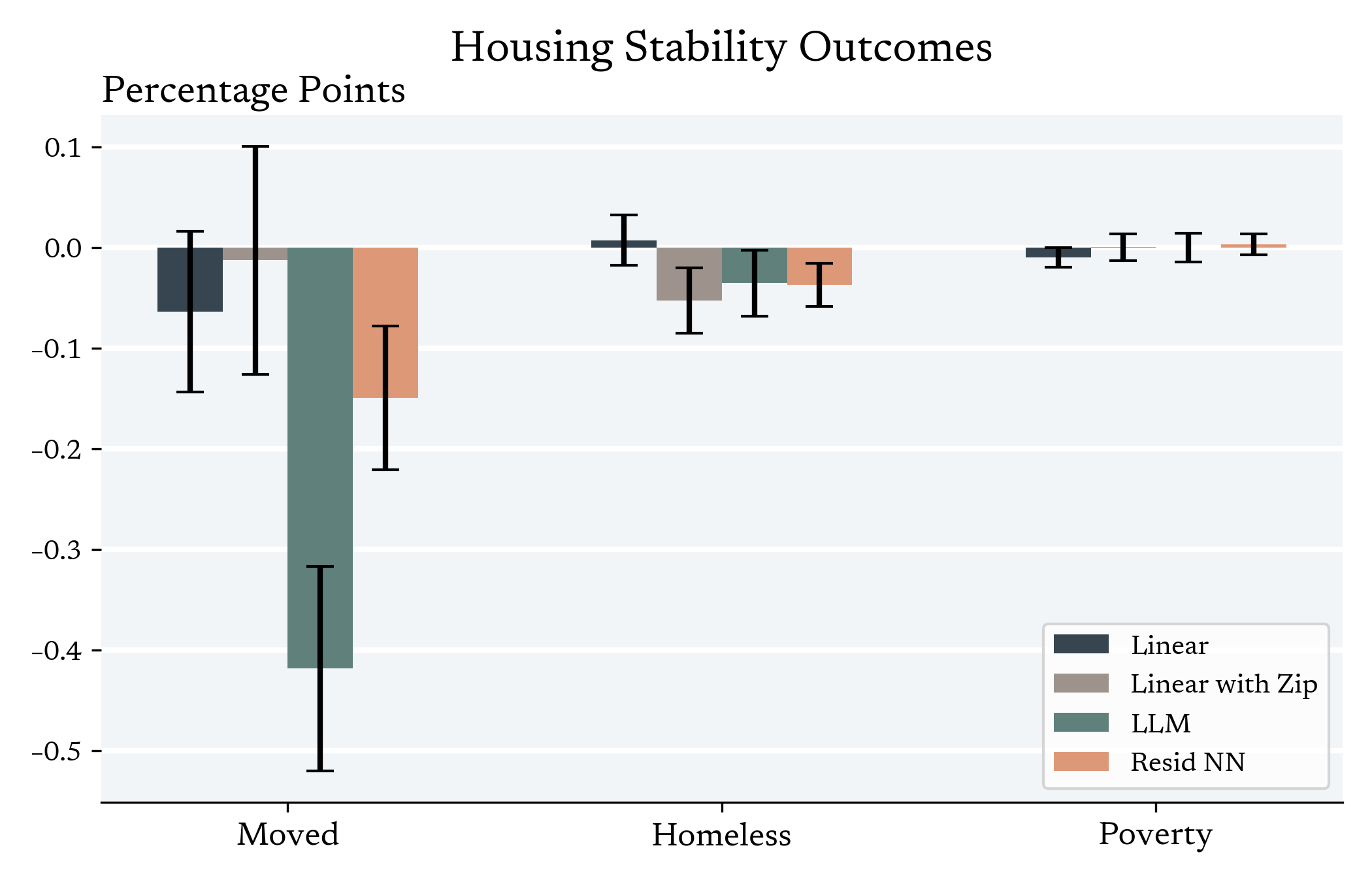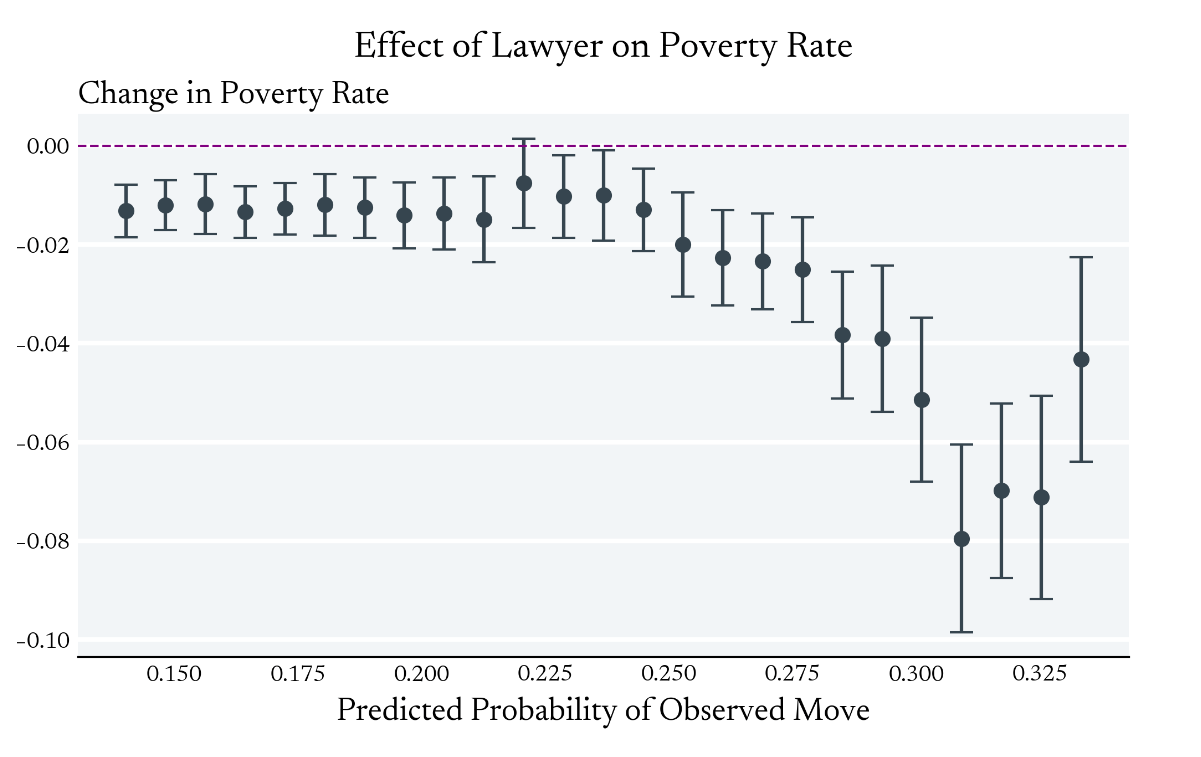
Patrick Power
Shomik Ghosh
Markus Schwedeler
Do Not Cite
The Right to Counsel at scale
The economics of Housing & Homelessness
Overview
Research Question: Impact of legal aid in eviction cases on housing instability
Motivation
Slide on Affordability
Slide on Noted Costs of Eviction

- 30 day notice of Evictions for tenants receiving housing subsidies
- Five day grace periods on late rent

Increased Housing Legislation
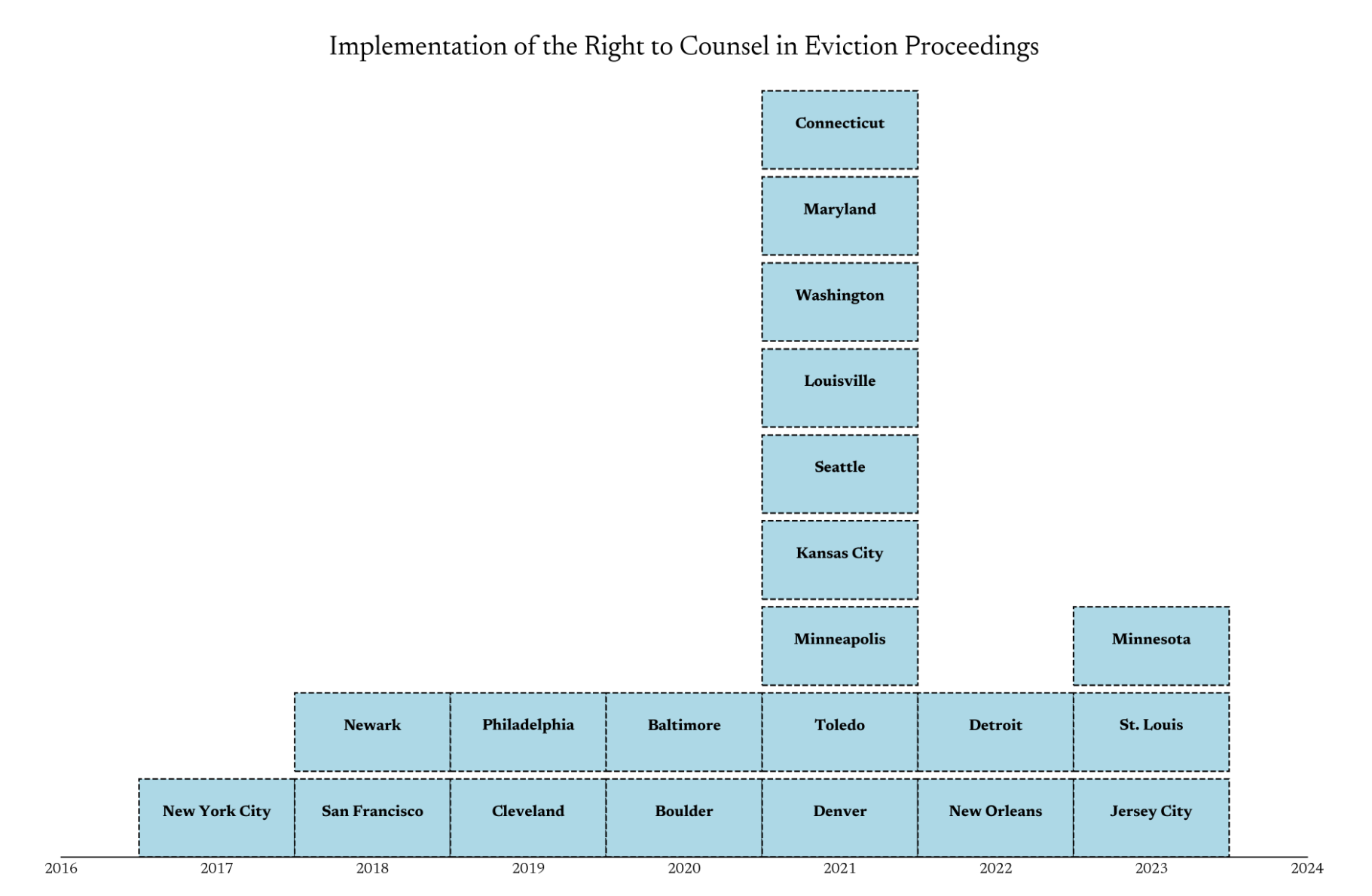
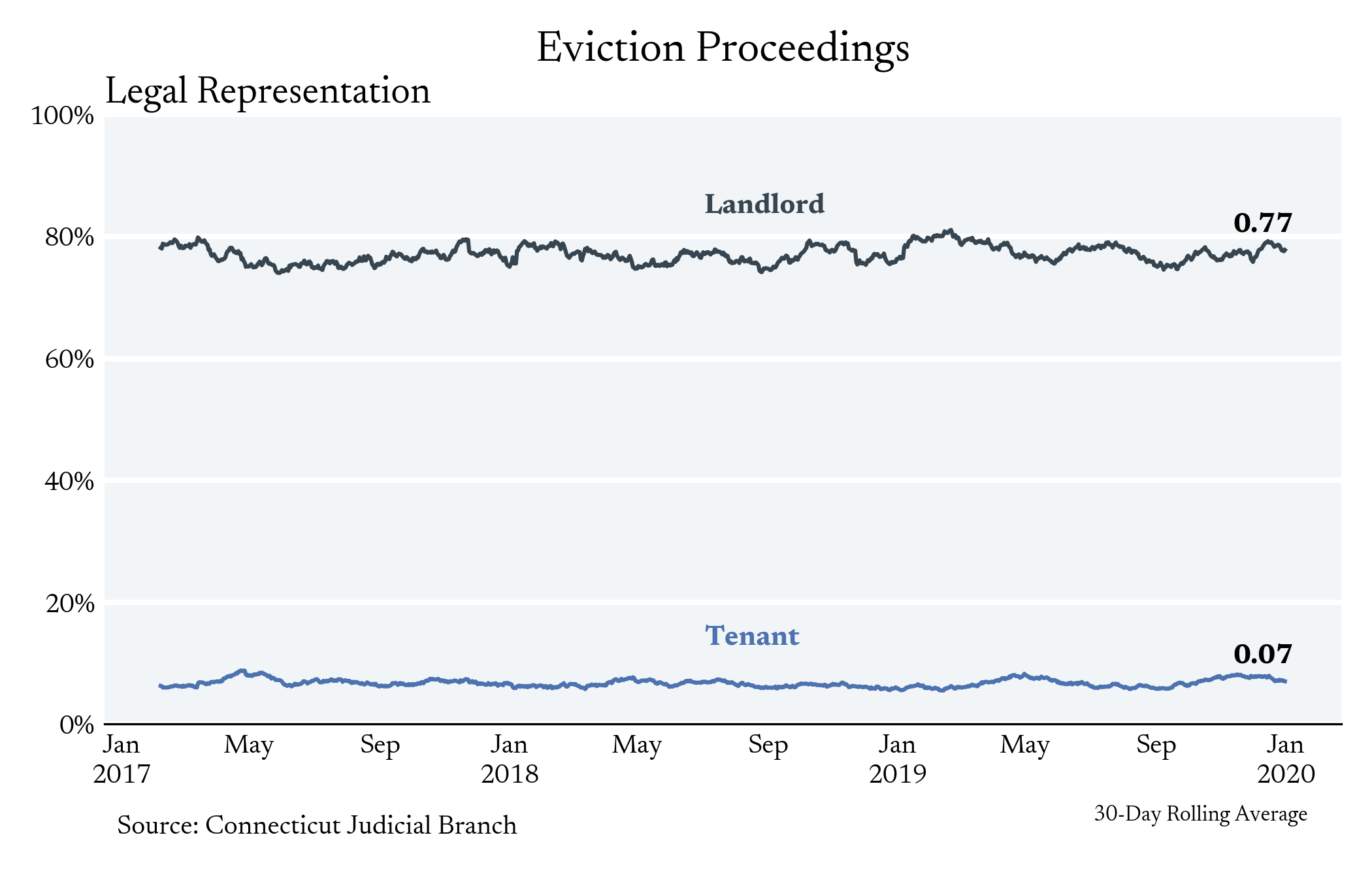
- " 'Band-aid' for bad substantive law"
- Targeted "type of antipoverty program"
Motivations
(0) Do tenants have a strong defense?
The Essential Questions have been asked for decades
(1) Does legal aid help tenants win in housing court?
(2) Does legal aid reduce the likelihood of homelessness, and improve housing stability?
(3) What are the costs to landlords (and are they passed on to other individuals?)
(4) Does the effectiveness of this policy diminish if tenants anticipate support?
This Note will examine the impact of one Legal Services Program, the New Haven Legal Assistance Association (LAA) on landlord-tenant disputes. The Note's findings on LAA's impact on this one area of law are in no way conclusive as to its general performance or to the overall value of Legal Services in the nation. Nevertheless, they may suggest questions for further study in other programs and other types of litigation.
- Legal Services and Landlord-Tenant Litigation: A Critical Analysis (1973)
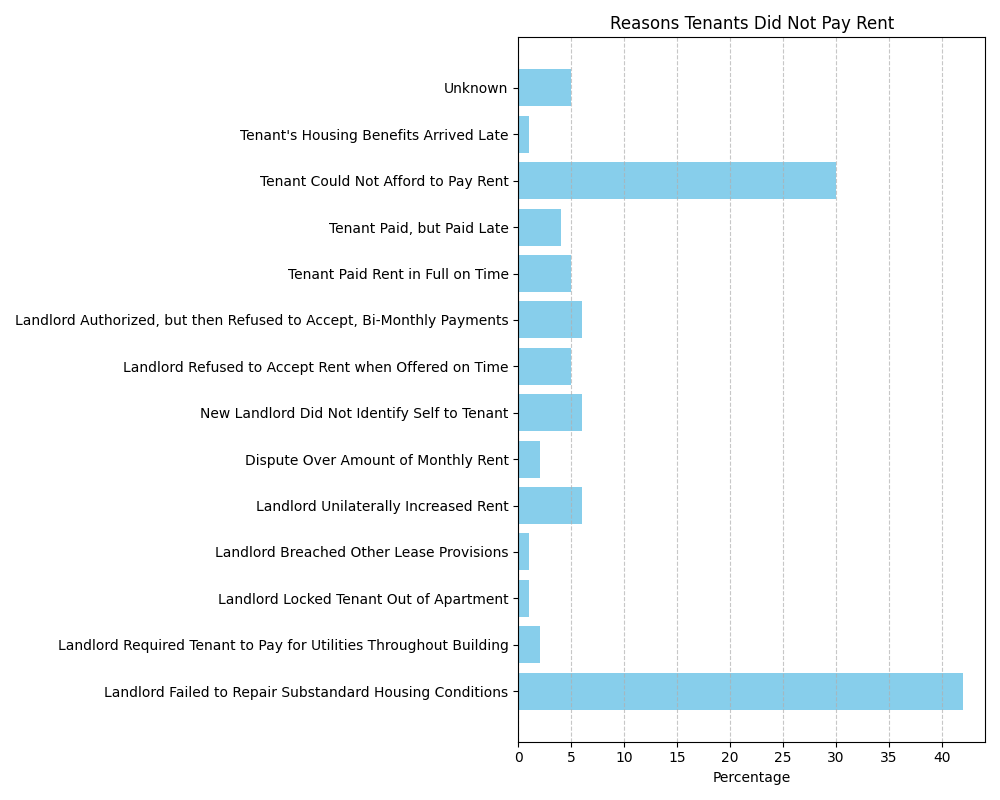
Gunn 1995
Do tenants really have a defense?
Challenges of Empirical Work in this Setting
- Housing Court Outcomes are not always informative
What does it mean when a case is withdrawn?
- Housing court files contain little information on tenant defenses
Data
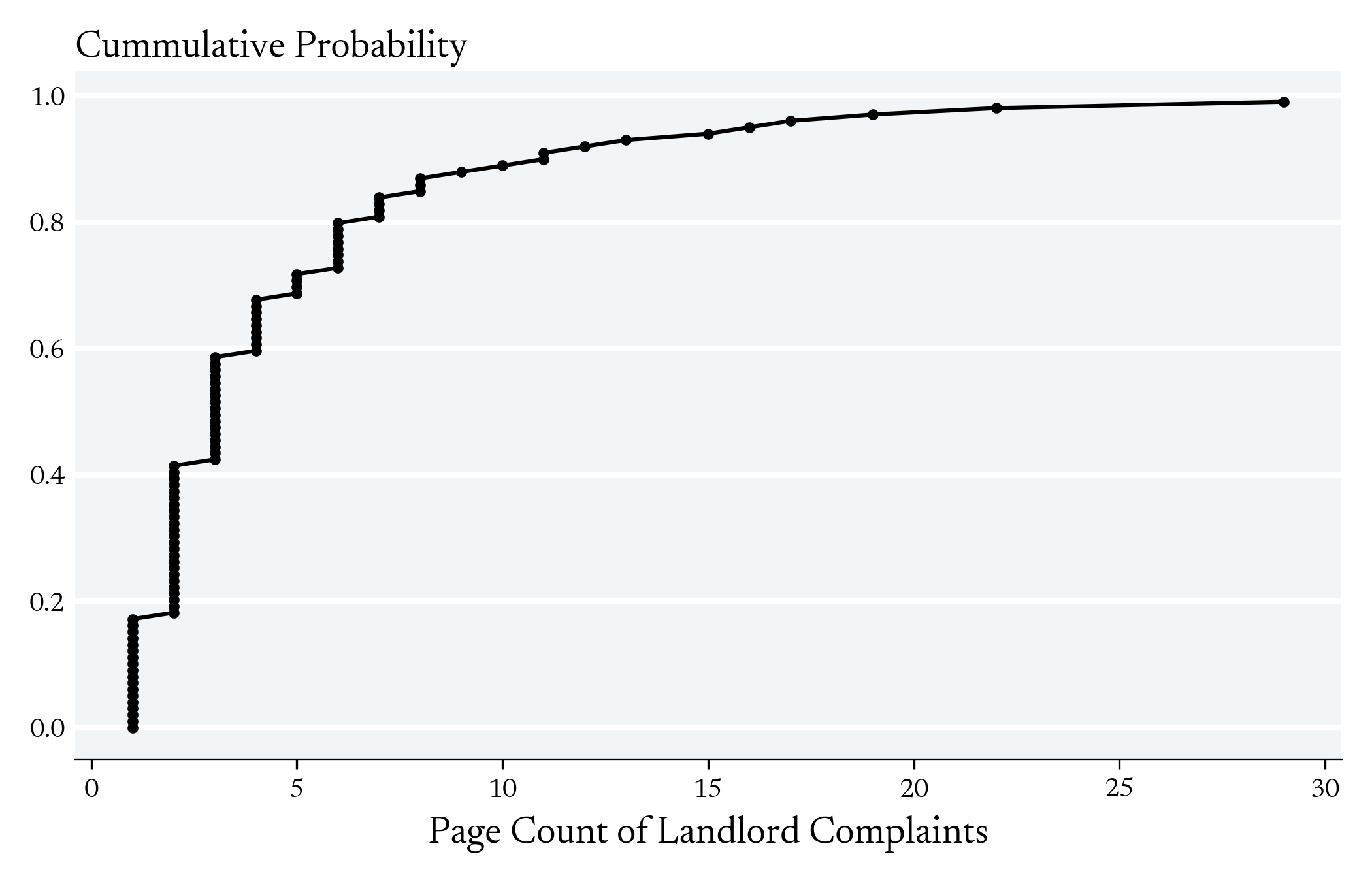
LANDLORD COMPLAINTS
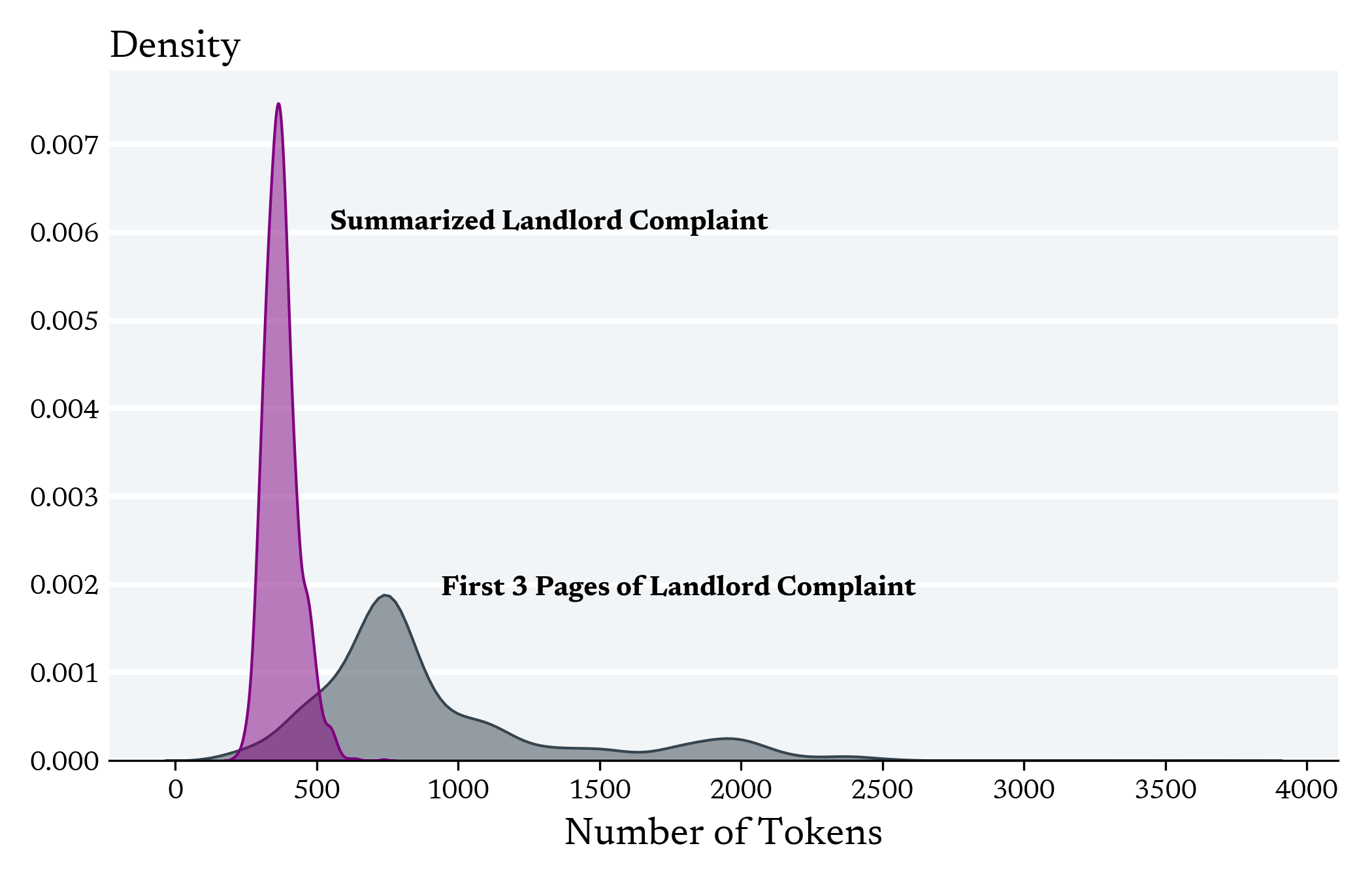

Background
The (Eviction) Rental Market
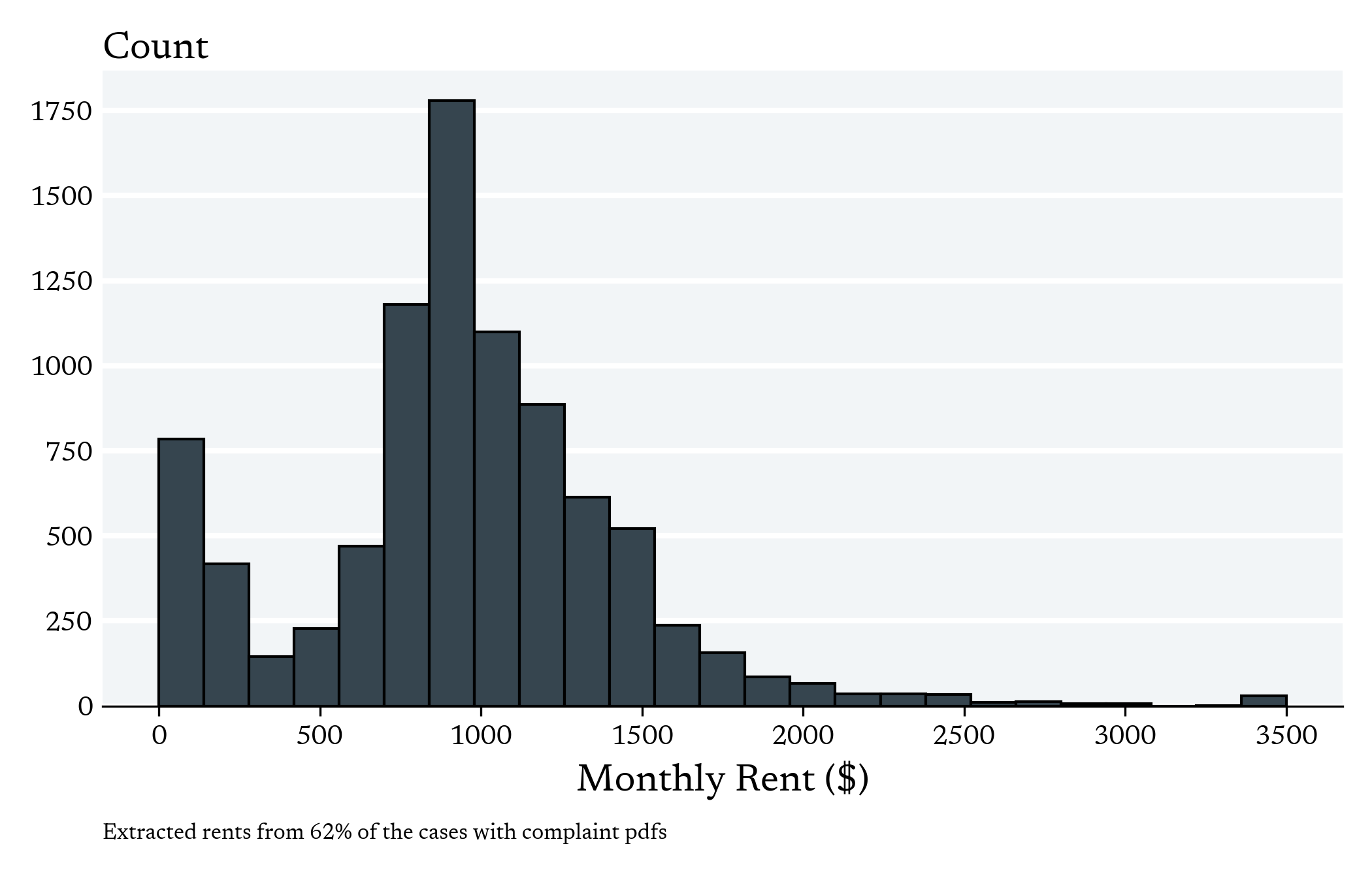
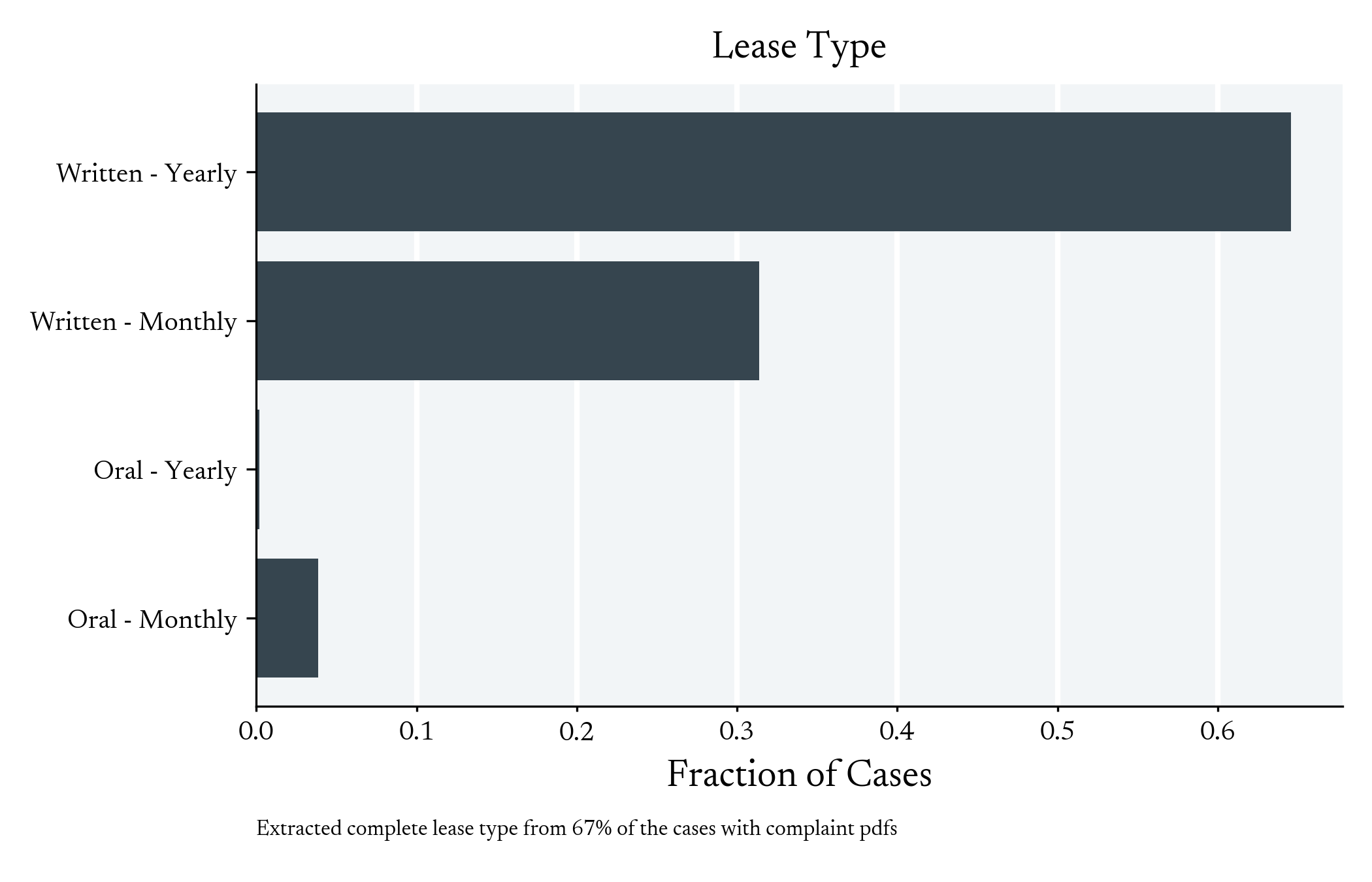

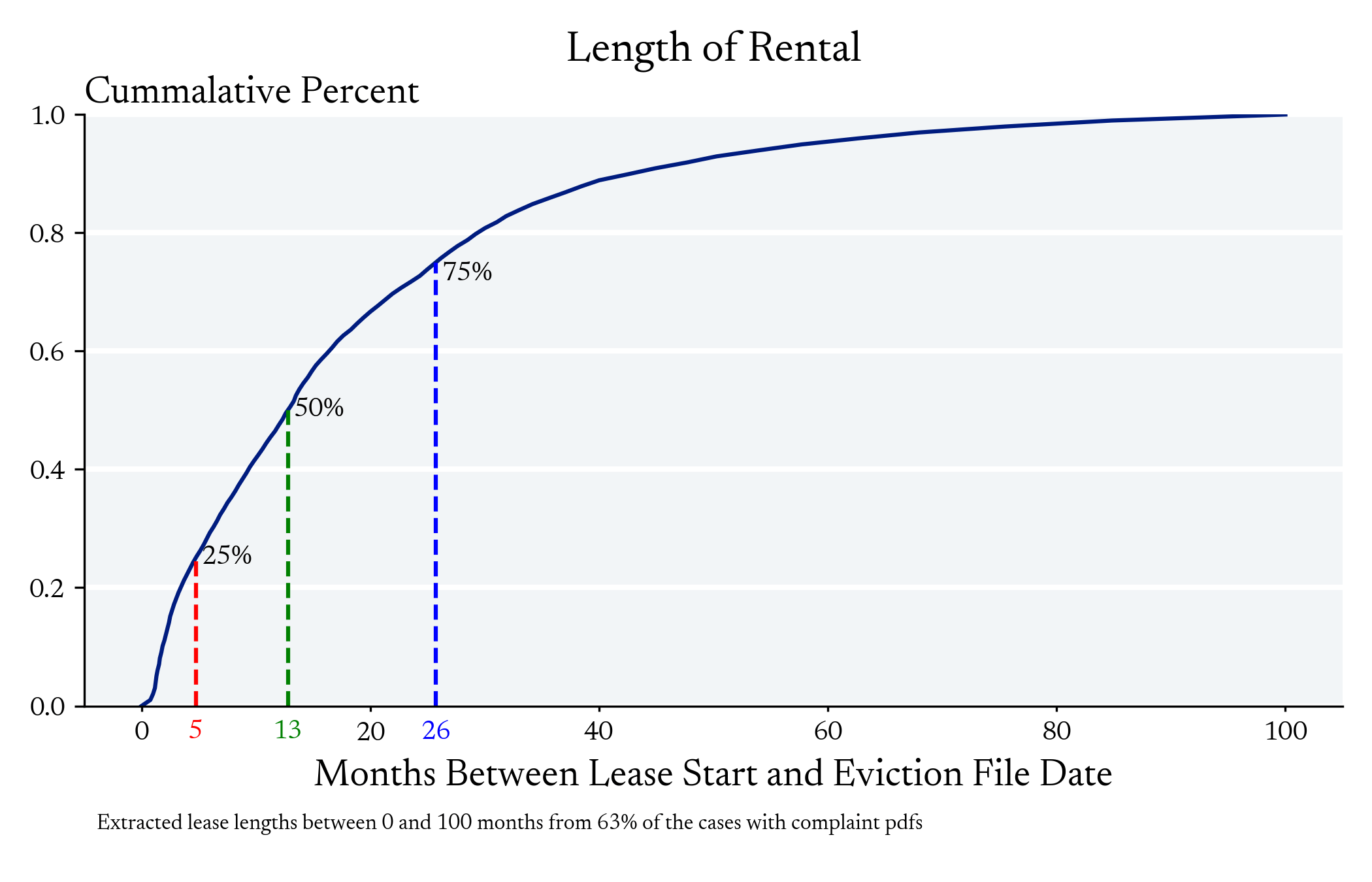
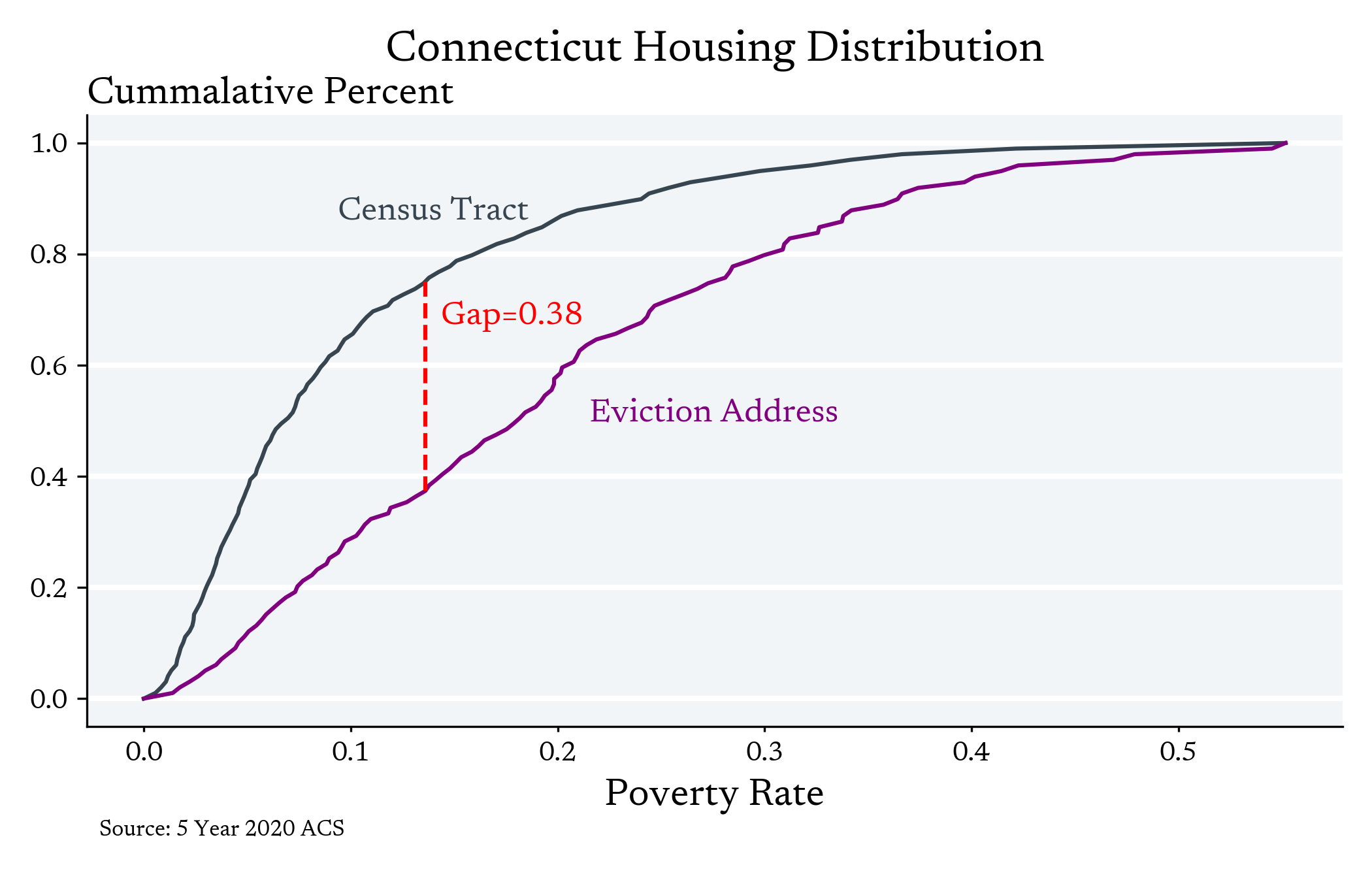
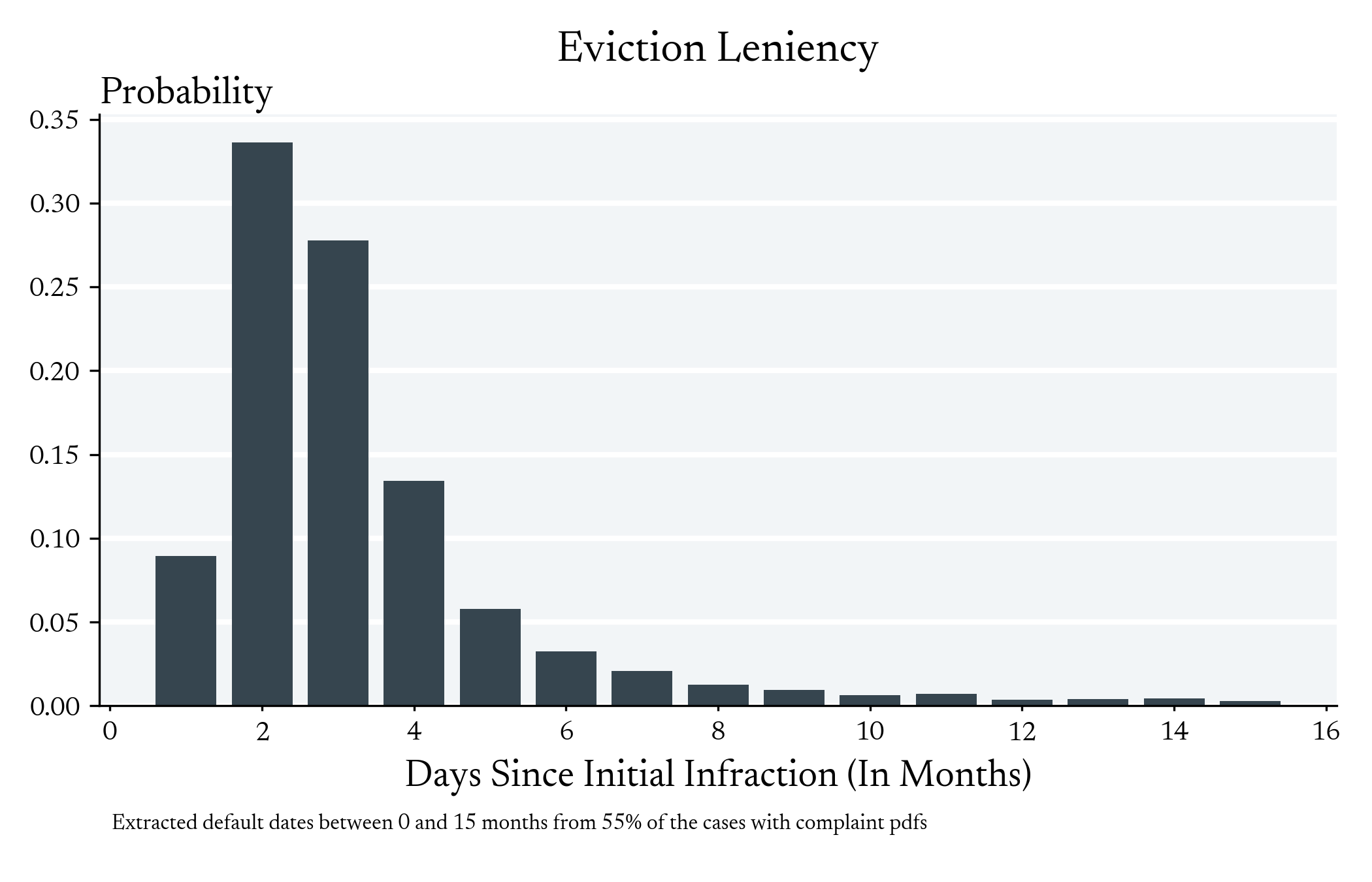

Notice to Quit
Summons


Complaint
Appearance


Answer
Landlord
Tenant
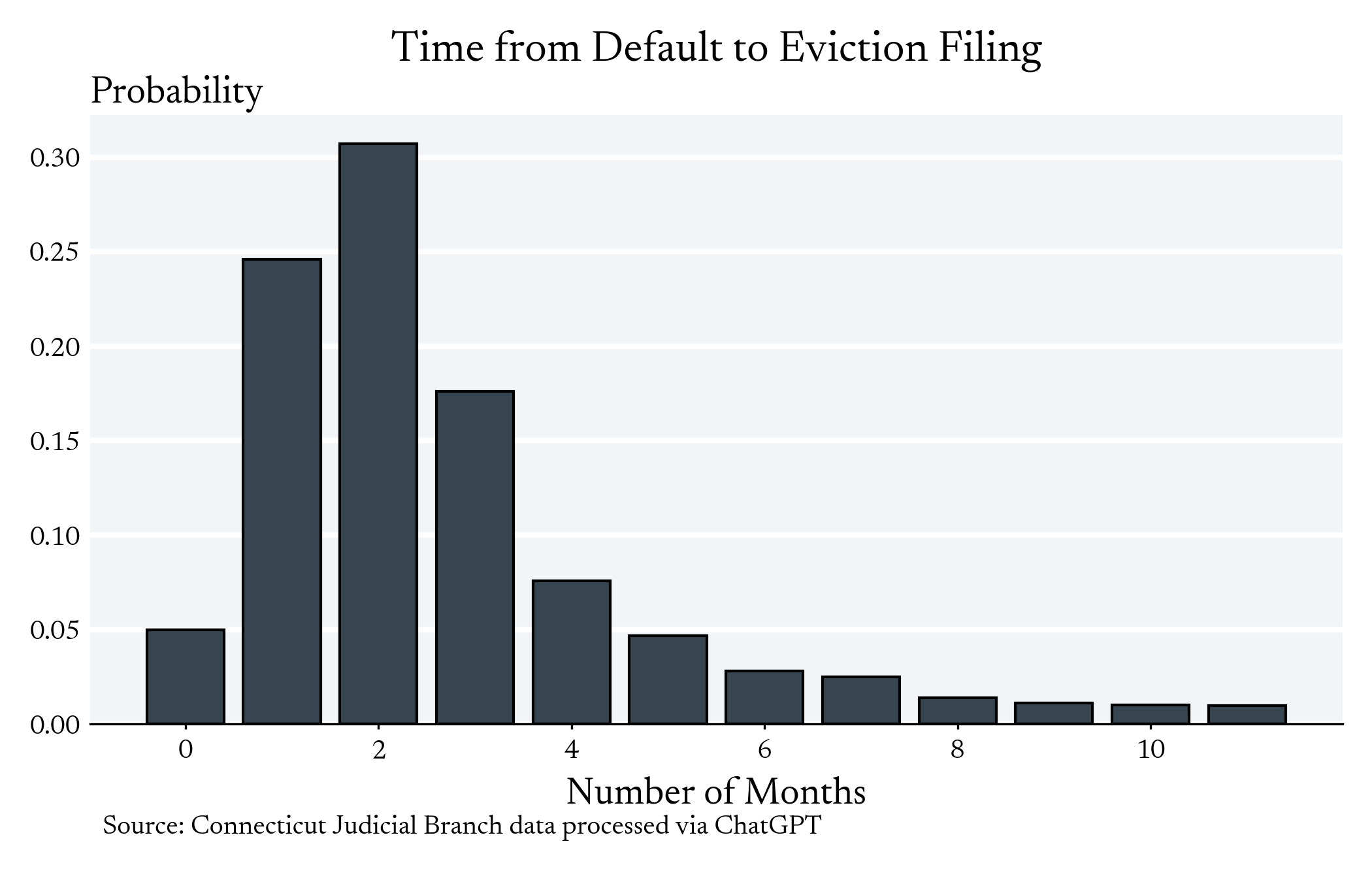
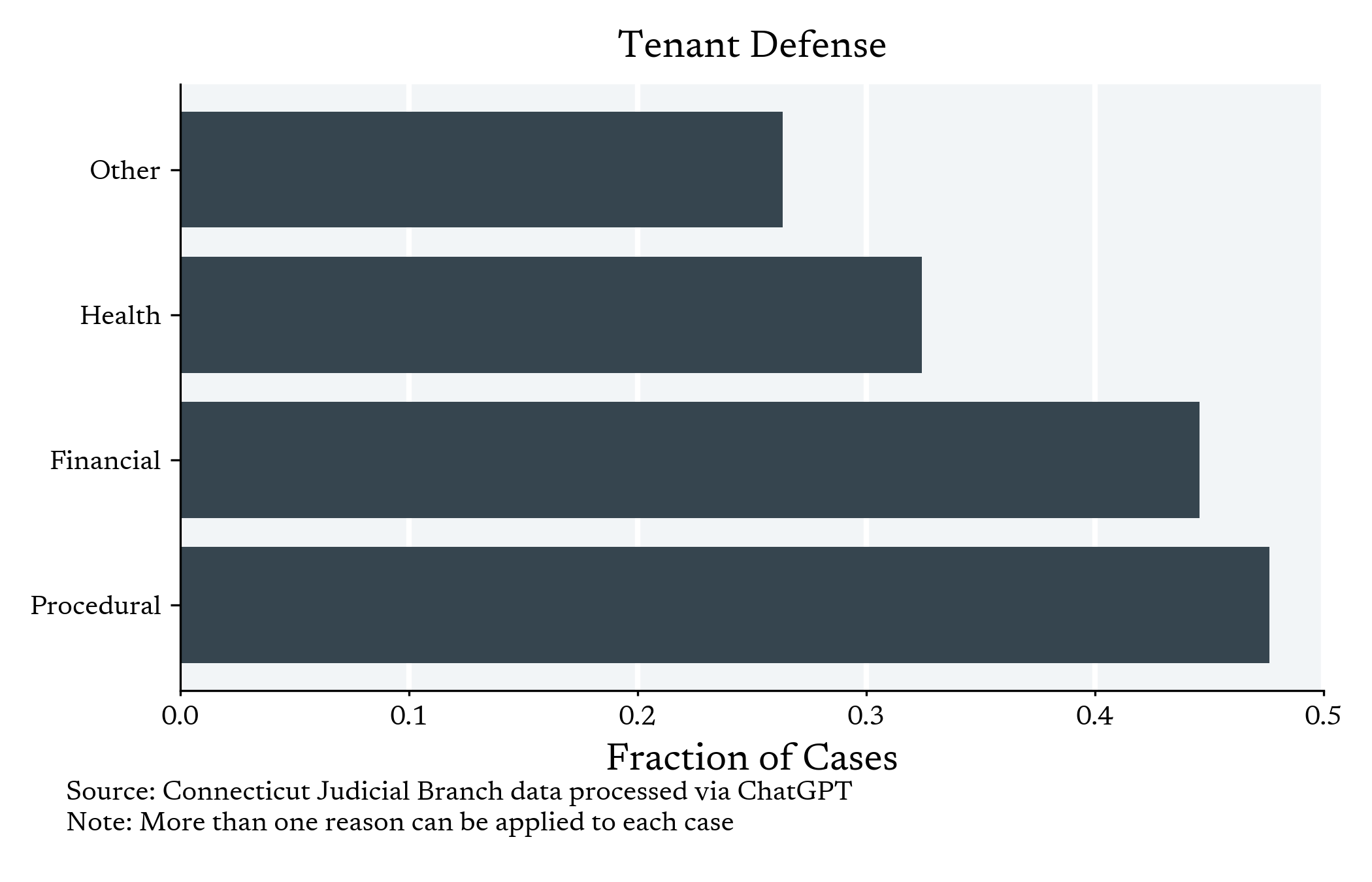
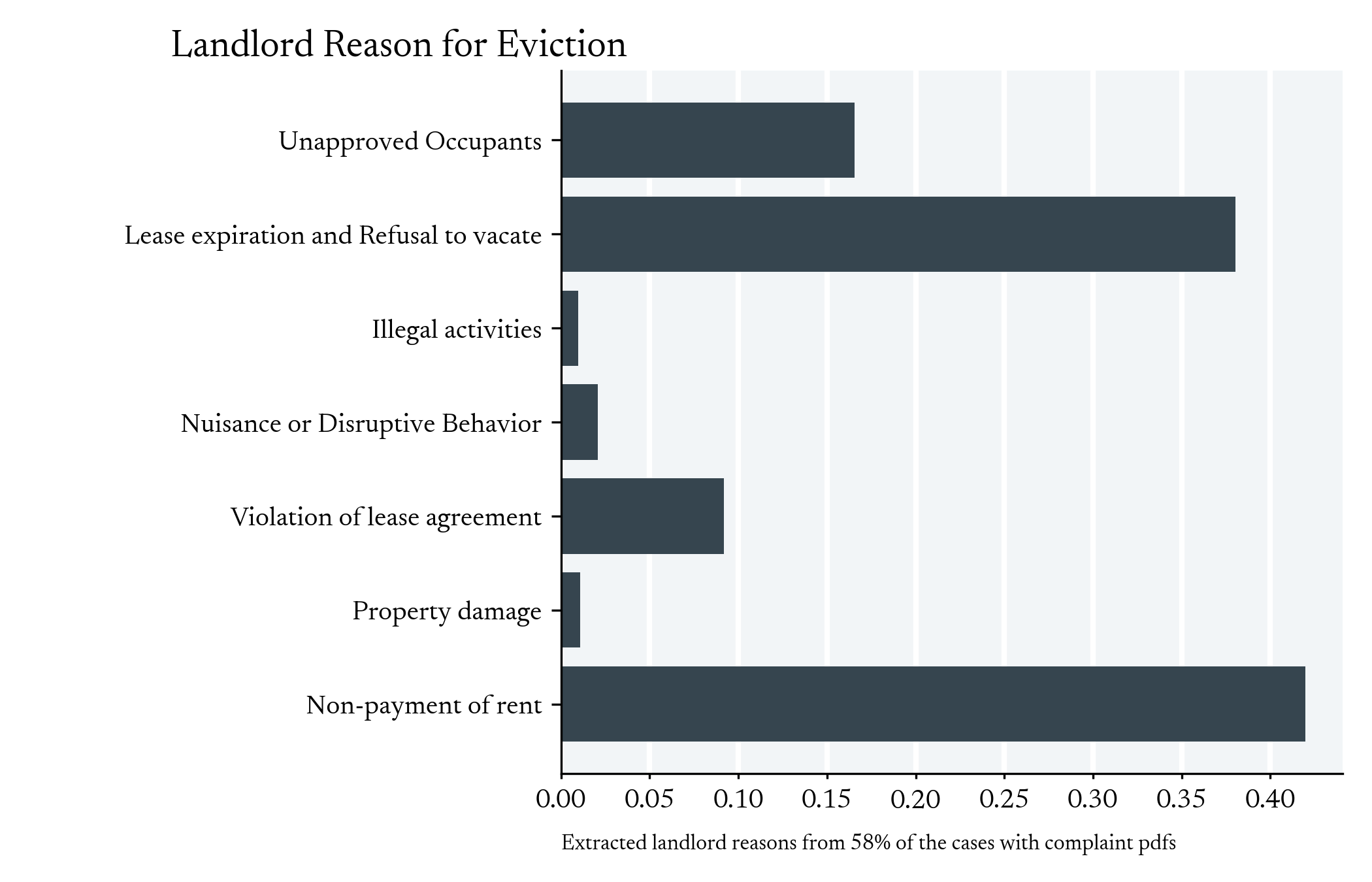
Do tenants have a strong defense?

We don't observe an Answer for the Majority of Cases
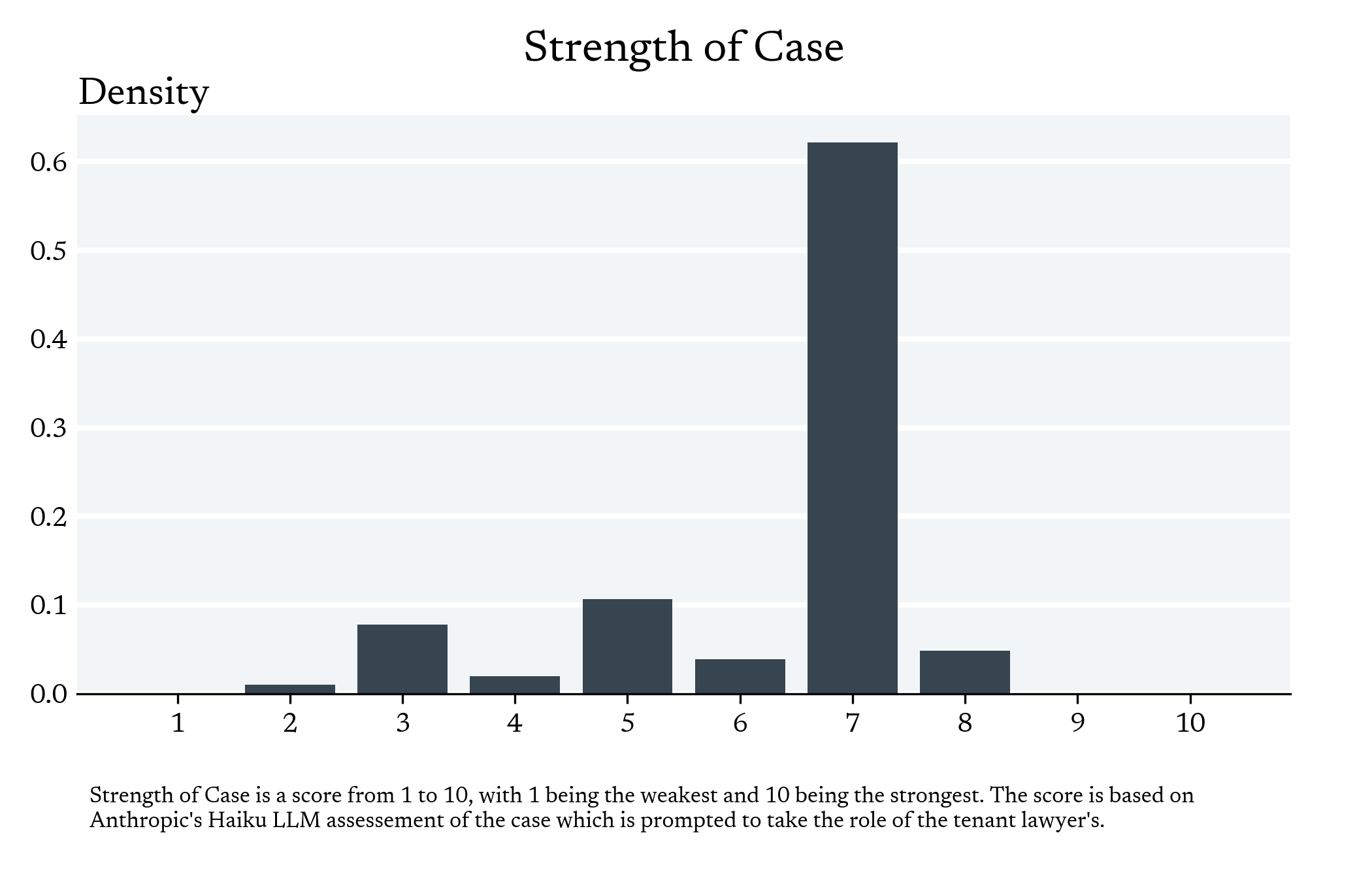
Have Second LLM explain scoring
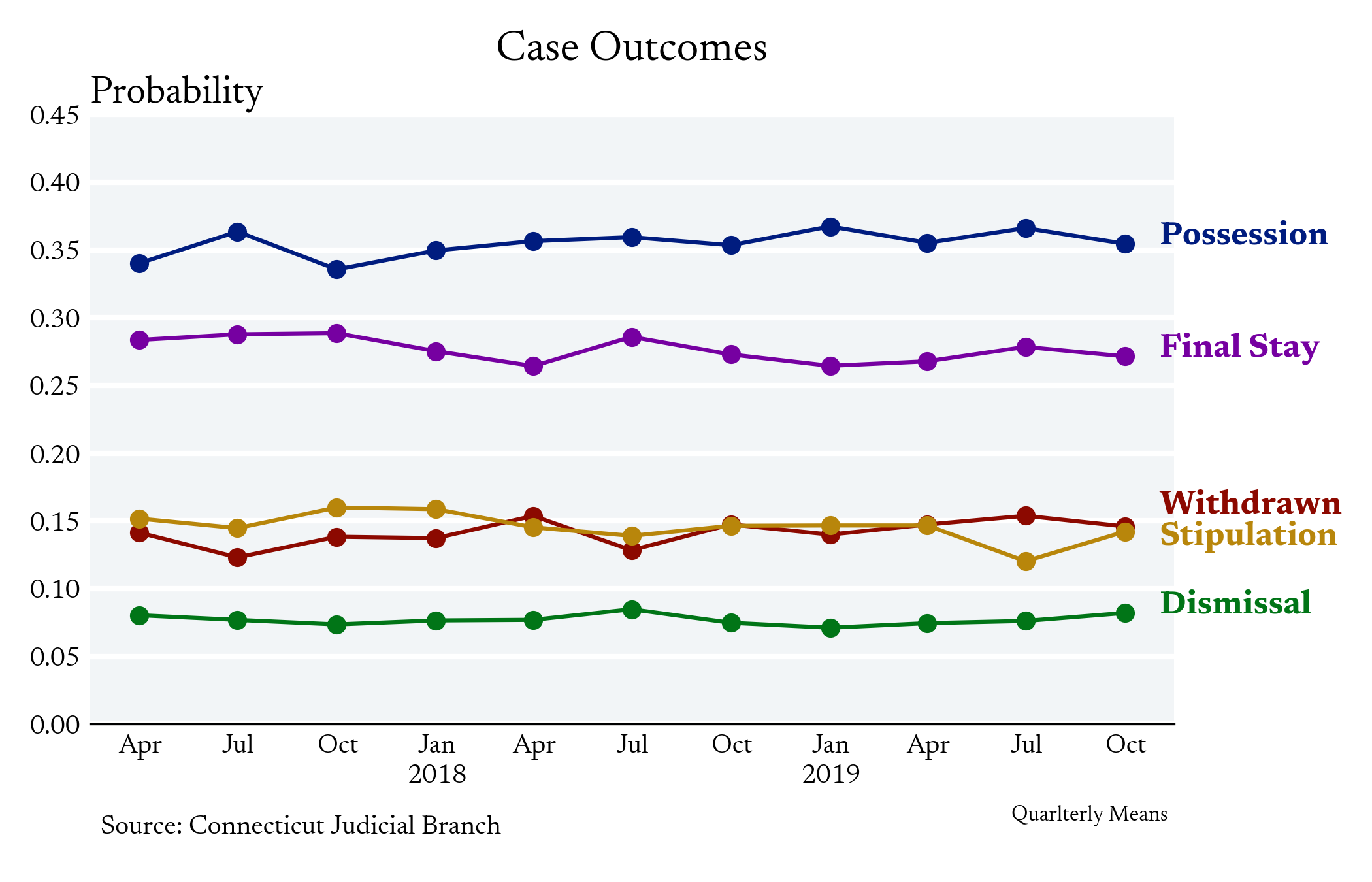
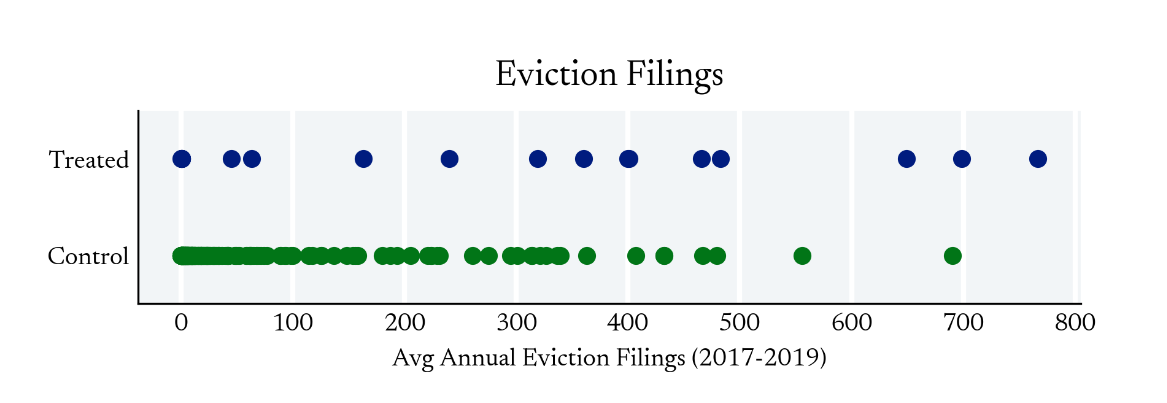
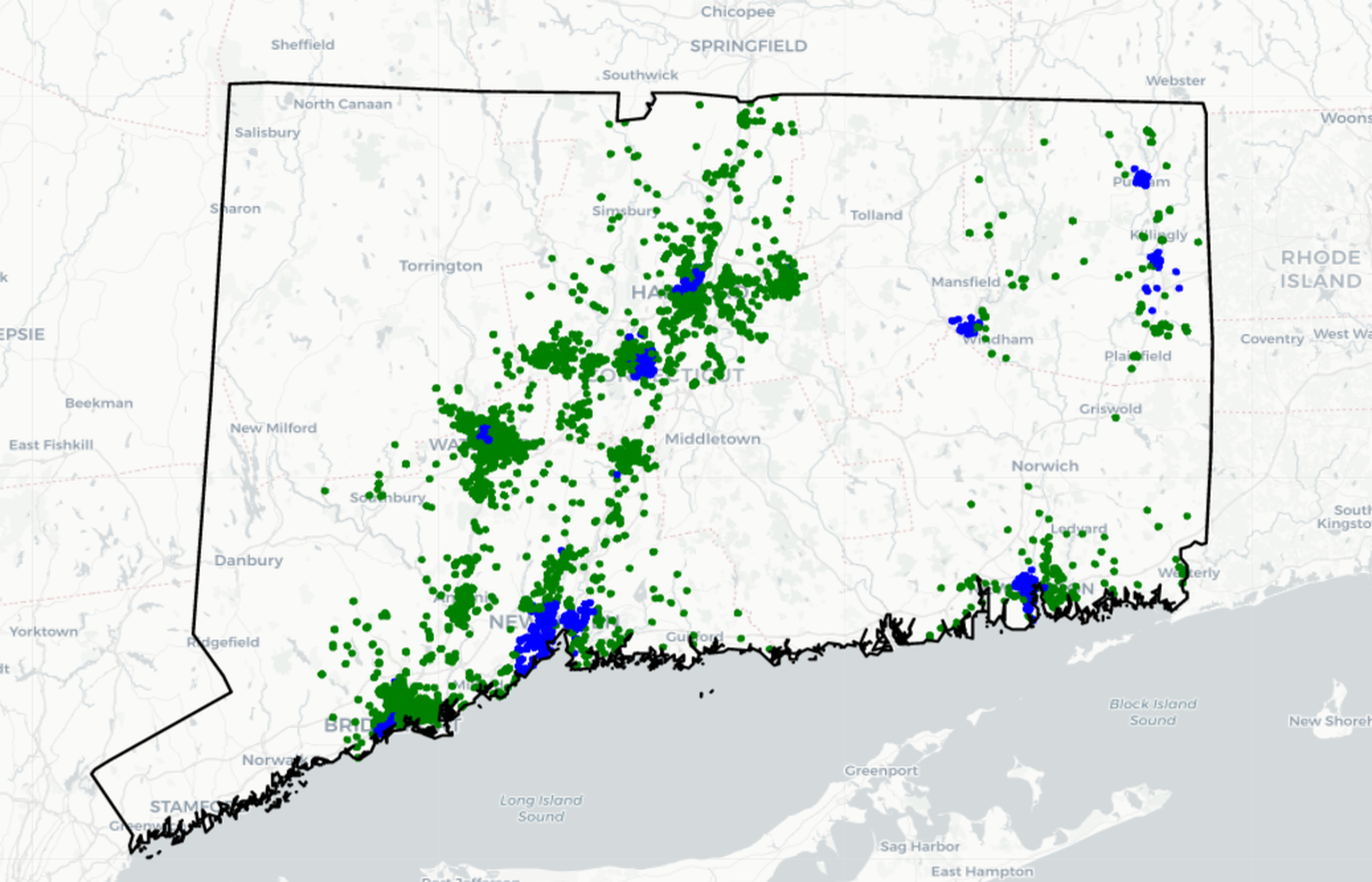
Implementation

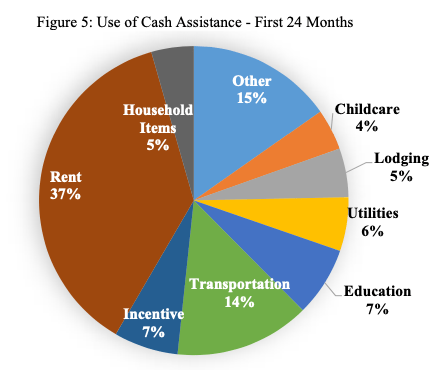
Evans et al. (2024)
Literature Review
"The primary factor leading to this differential appears to be LAA's use of the procedural complexities available in summary process litigation. However, despite such efforts, the landlord almost inevitably obtains judgment of possession."
Interpretation
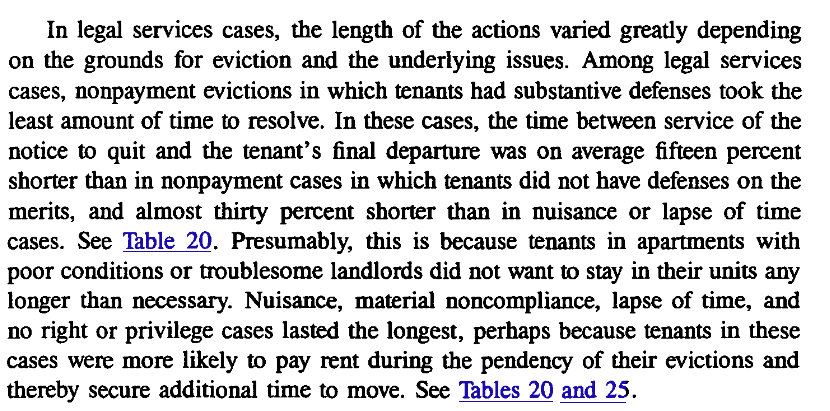
These are what Gelman and Imbens (2013) would refer to as "Reverse Causal Questions"
We don't know "why" tenants with substantive defenses took the least amount of time to resolve. It could be because they didn't want to stay in their units or it could be for some unobserved reason
Gunn 1995
Credibility
"No two eviction stories are quite alike. Each has its own set of challenges, and families cope in different ways."
notation
Not Difference-in-Difference
"Selecting a pre-treatment period for the analysis is a challenge of this approach due to the substantial volatility in eviction during the COVID pandemic period, when various state and federal policies were implemented and sunsetted, often in an overlapping fashion."
- A common question we get when discussing our context is -- under what assumptions are you identified?
- This we cannot answer in a satisfactory way, but we feel that it's the right thing to focus on nonetheless.
- We can answer this (and we will answer this), but the better question is to consider why are the estimates that we report credible.
Motivation
Identification Assumption
Controls
- Month
- Housing Court
- Plaintiff has lawyer
- Gender
- Race
- Monthly Rent
- Zip Code Eviction Filings
- Landlord Reason for Evictions
- Tenant Defense
- Length of Lease
- Poverty Rate
Concerns
Selection Bias
Sufficient Set of Controls?
Information
Is there meaningful variation across Landlords?
Context
To what extent are we picking up the residual effects of the Pandemic?
Attrition
Withdrawn Cases are less likely to have text files
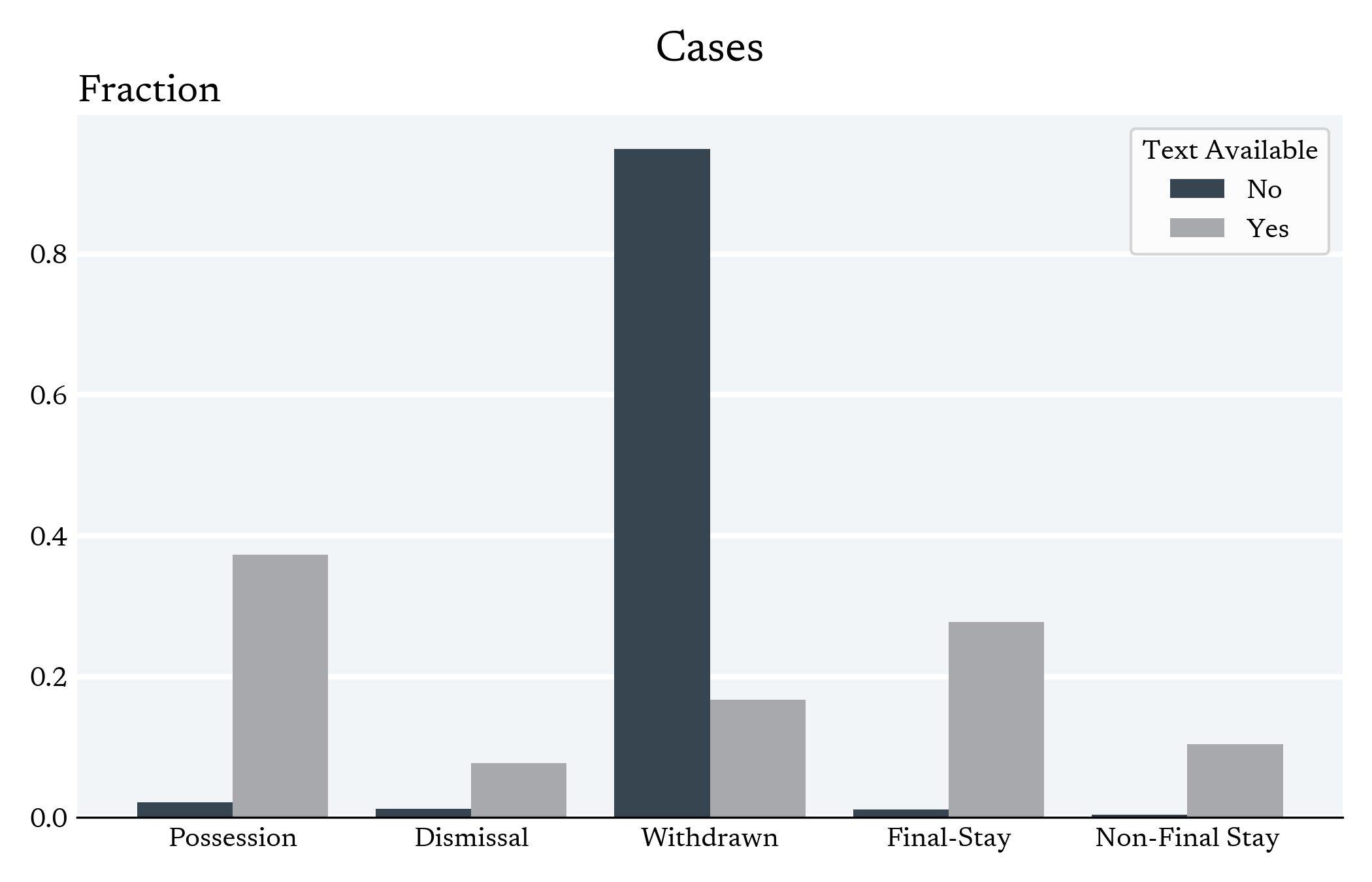
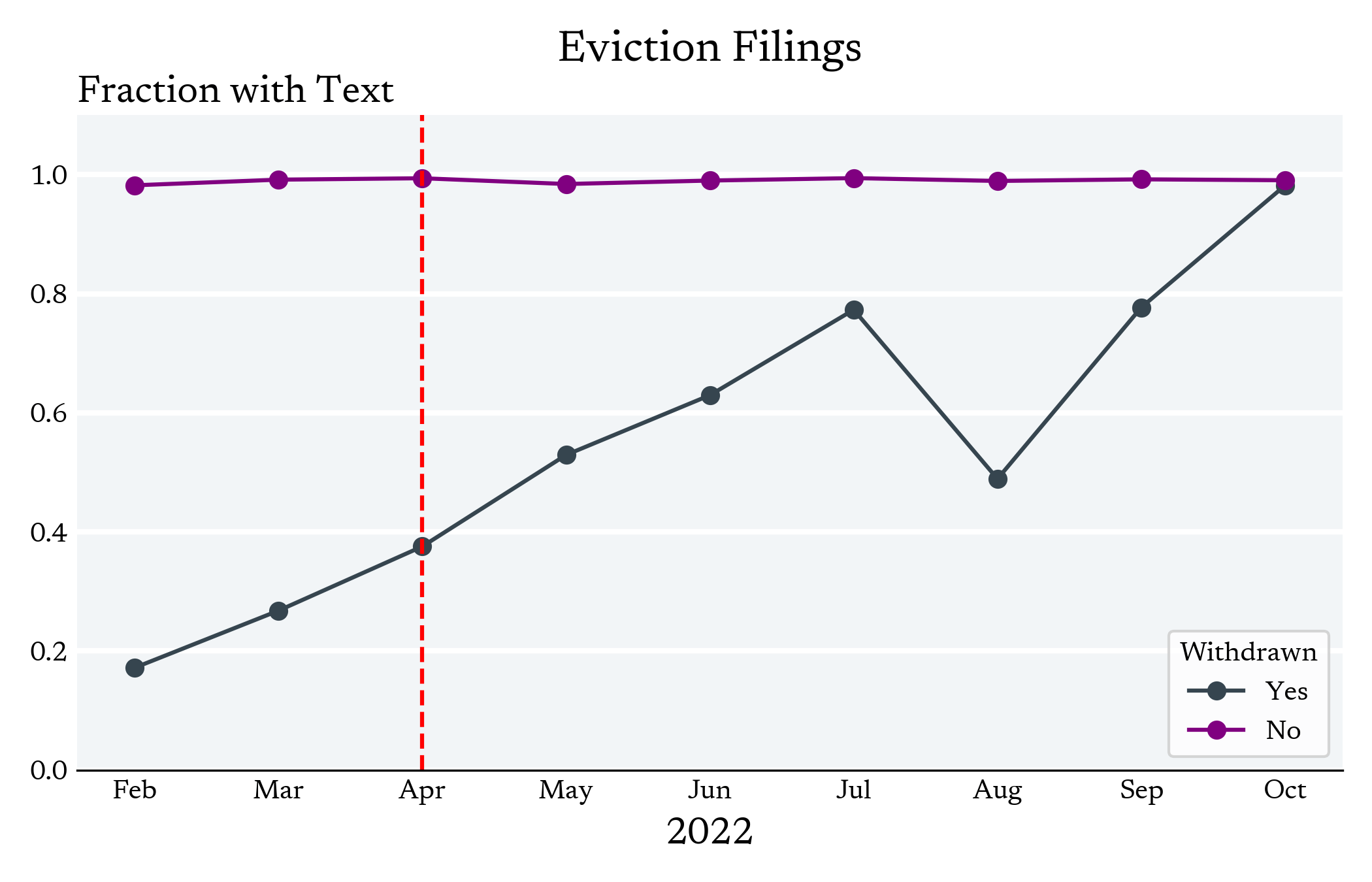
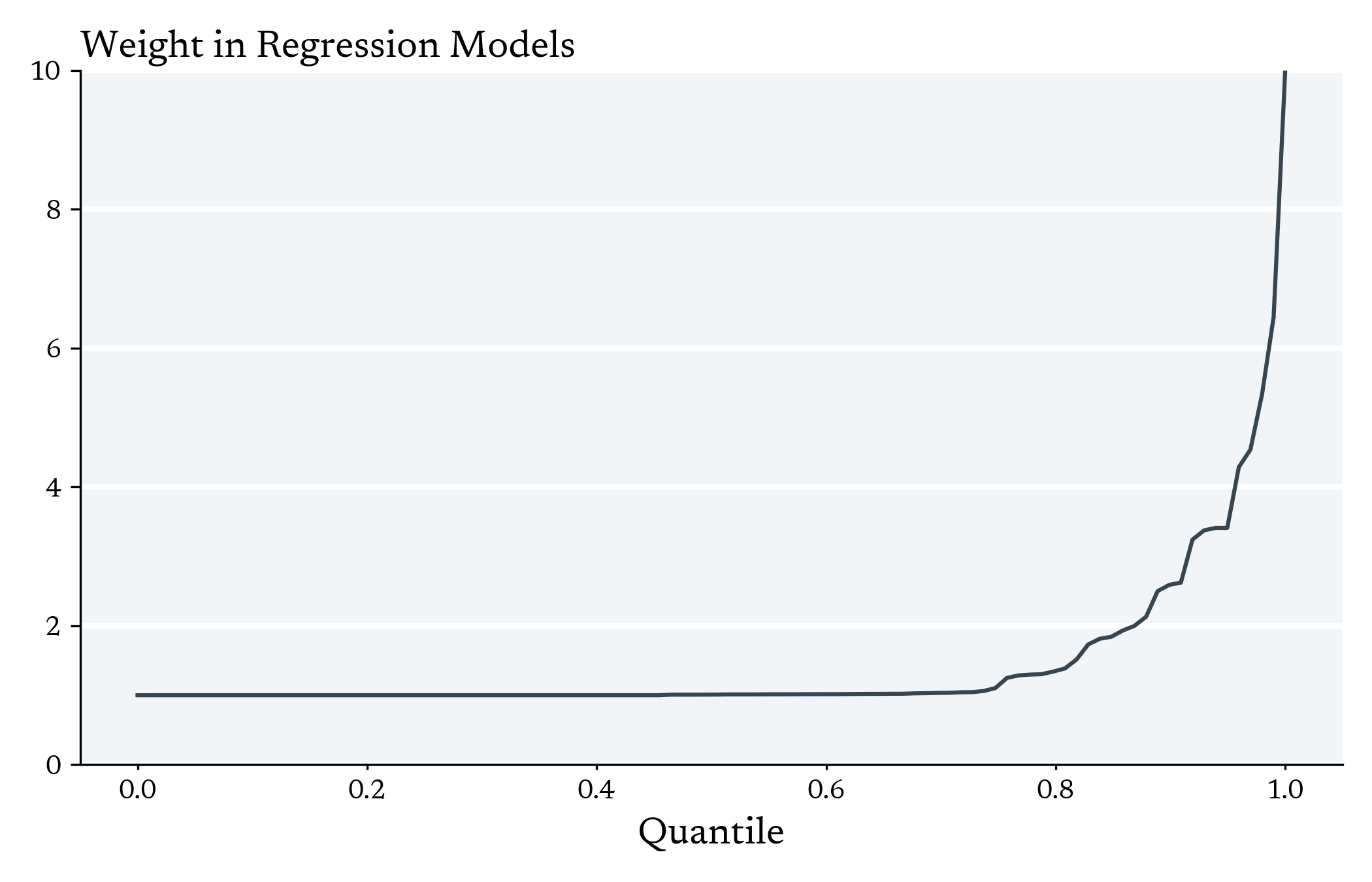
Clusters
Noisy Estimates
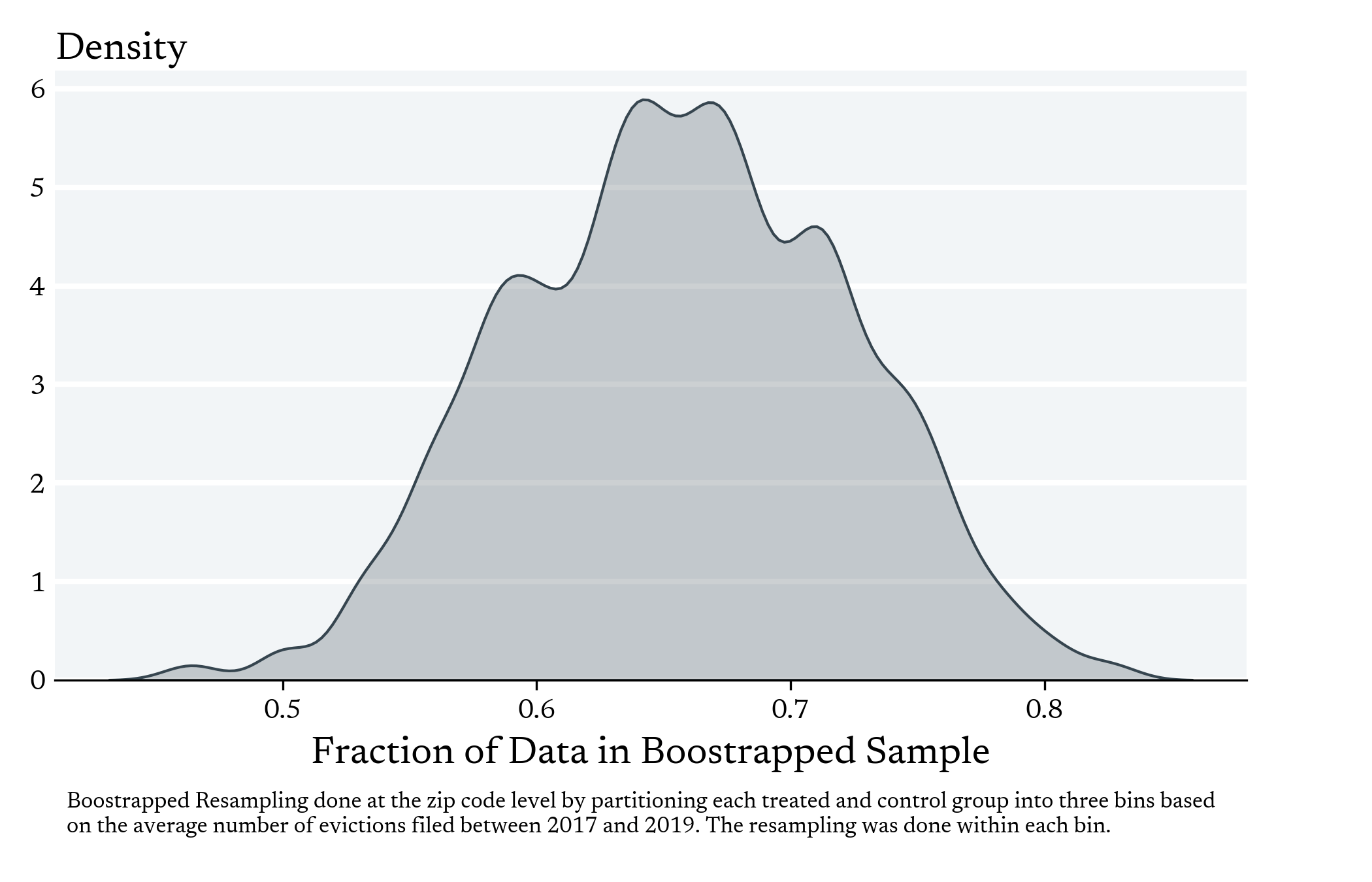
Housing Court Outcomes
Focus
Legal Aid Representation
Right to Counsel
Nonparametric Model
Approximate Conditional Expectation Functions with Linear Models / LLM / MLP
Models
Residualized Model
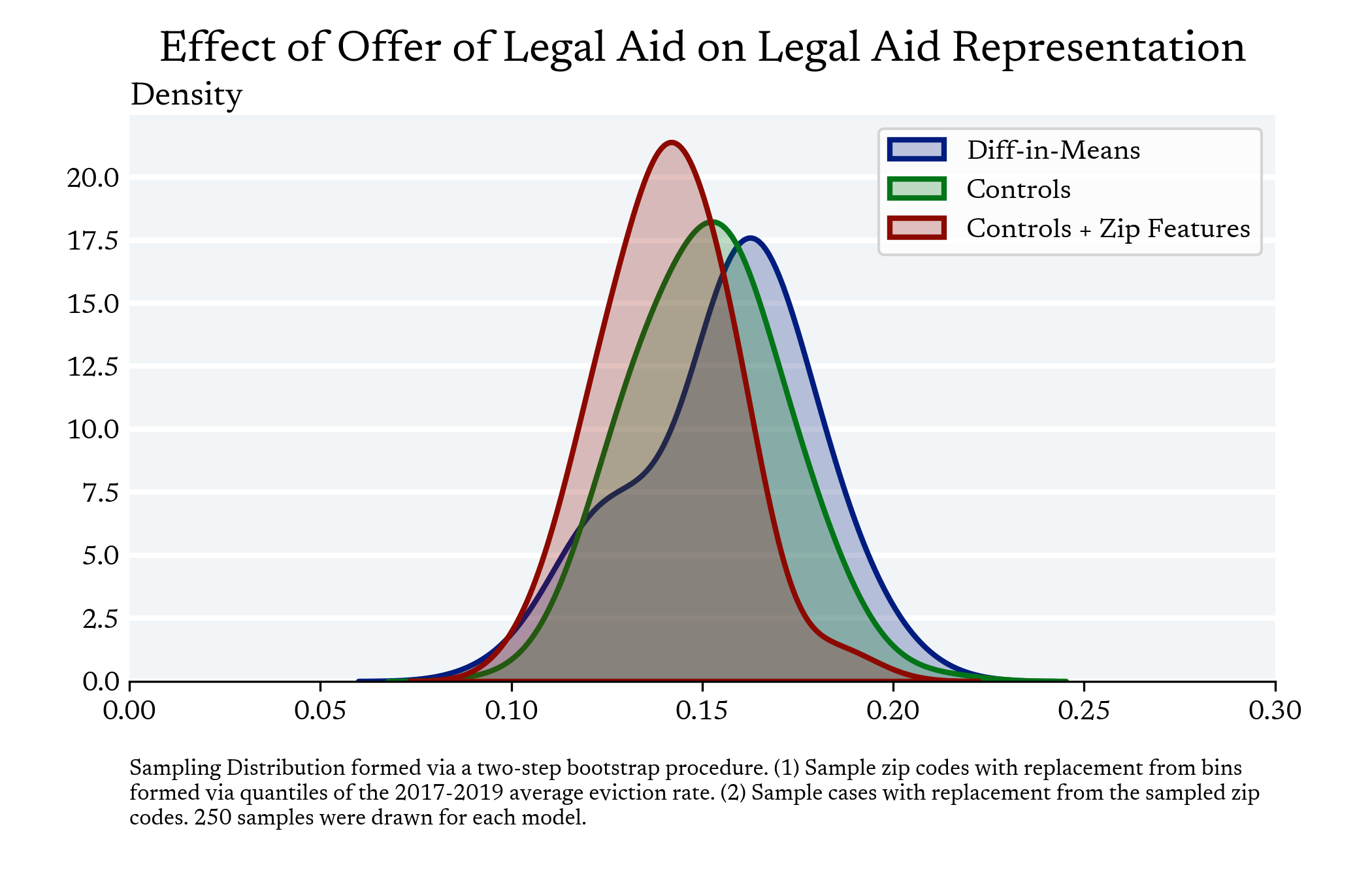
Approximate Conditional Expectation Functions with Linear Models / LLM / MLP
Nonparametric Model
Focus
Housing Court Outcomes
Legal Aid Representation
Residualized Model
Model
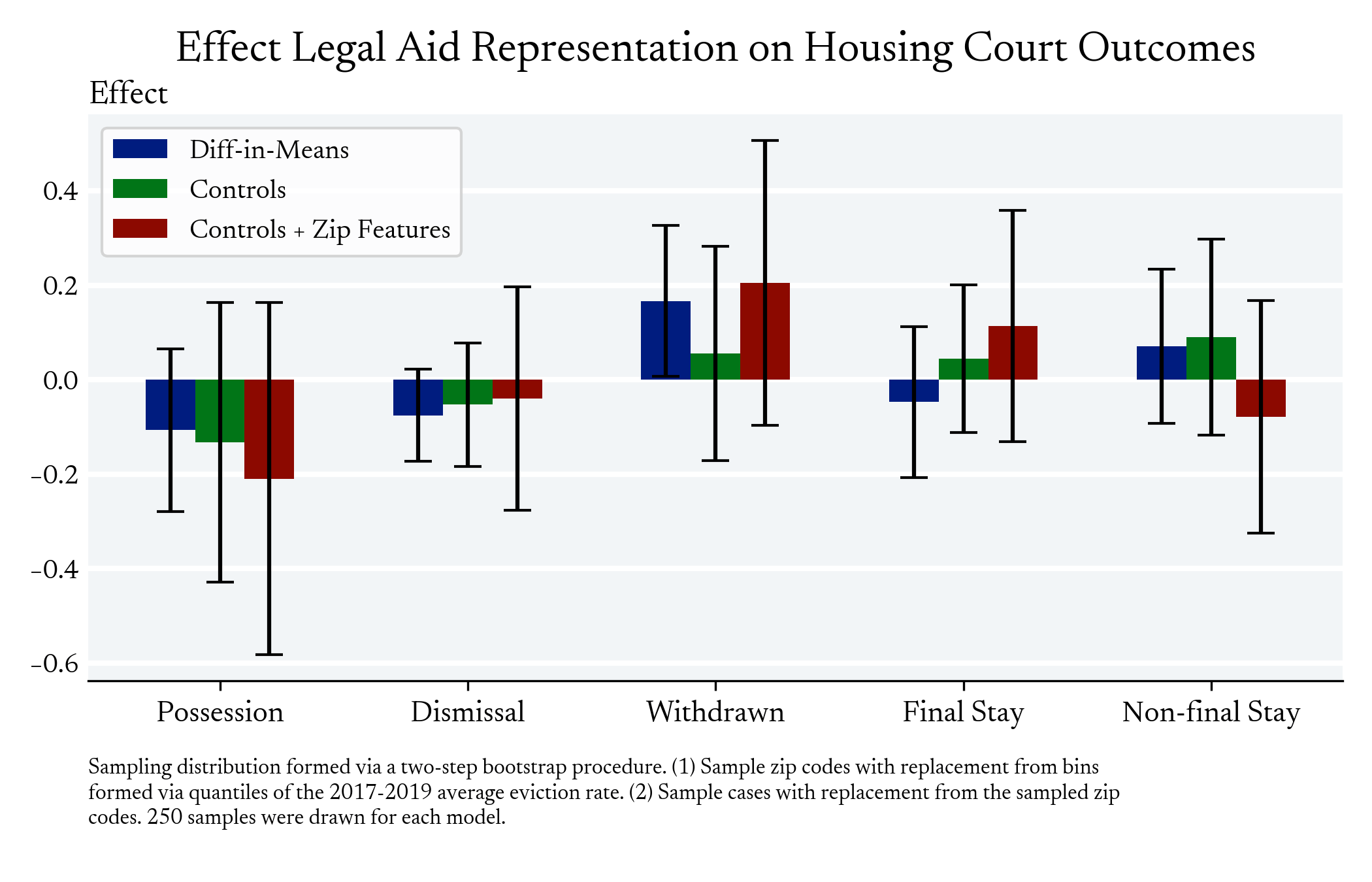
Housing Stability Outcomes
"After an August eviction, she and Dexter have bounced around. They’ve stayed in motels, at a shelter and in the back of a U-Haul. In her last days at the shelter, one of the other women staying there got an apartment. Austin has been crashing on her couch the past few weeks."
Experiencing Homelessness
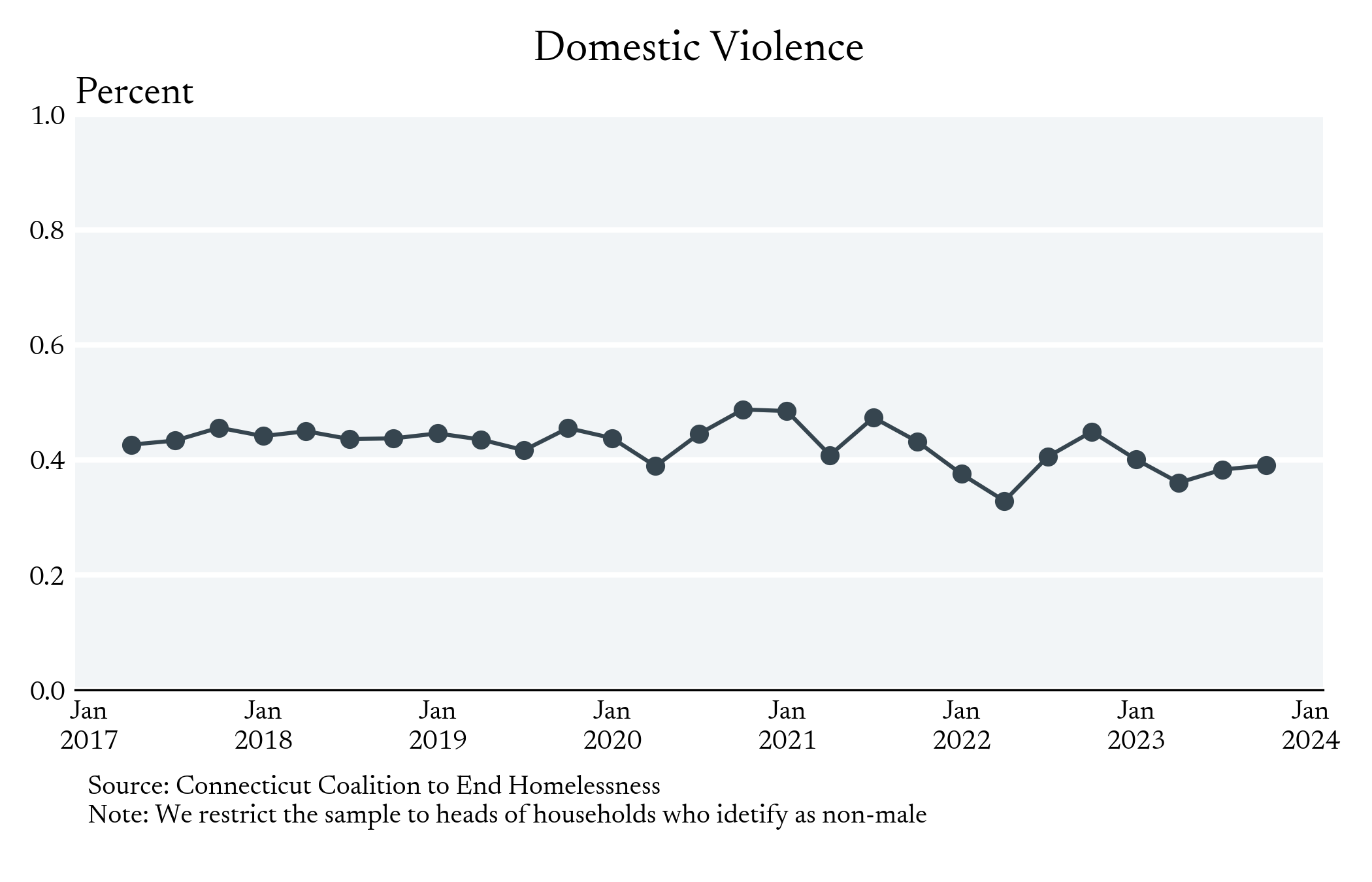
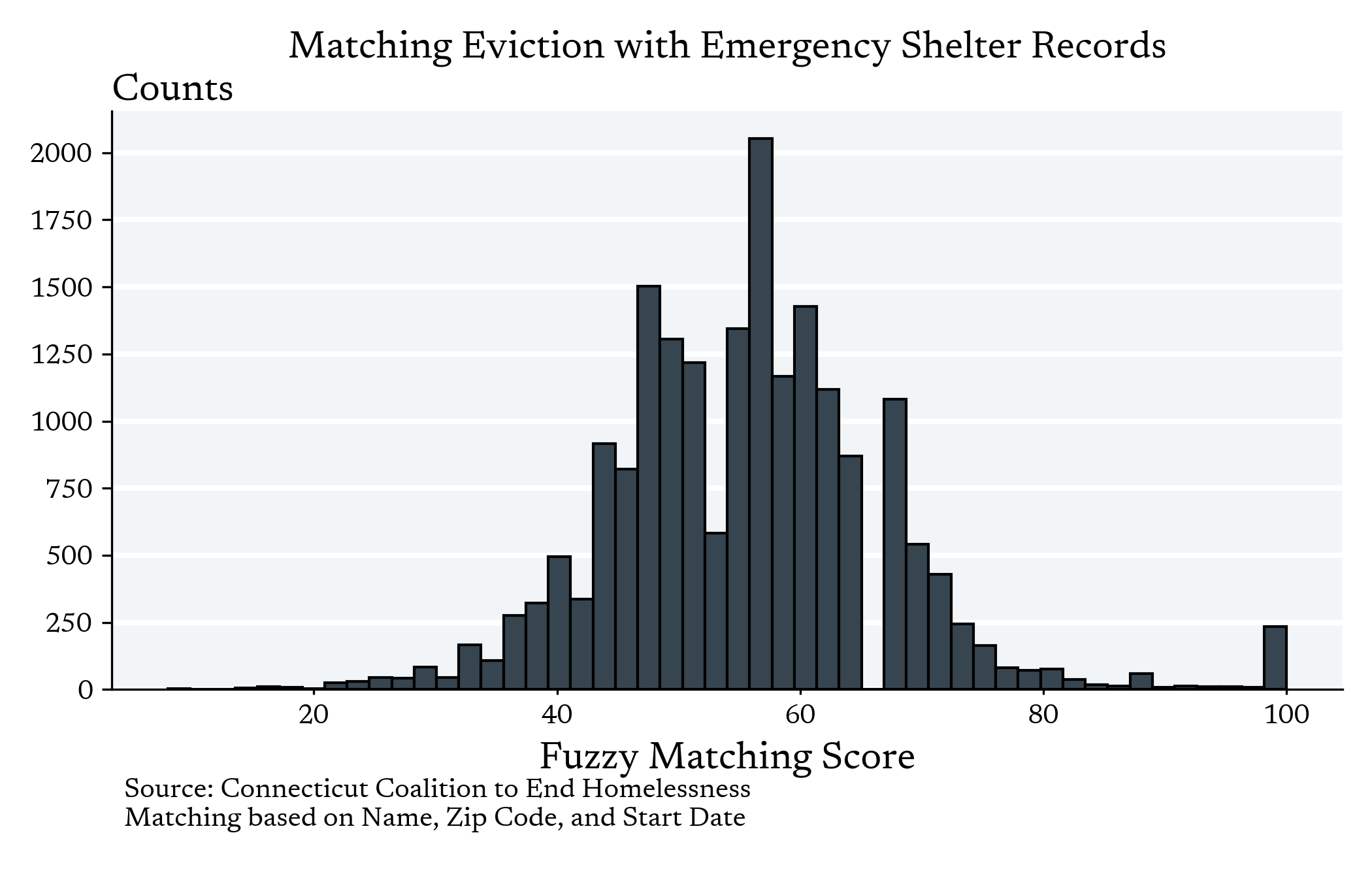
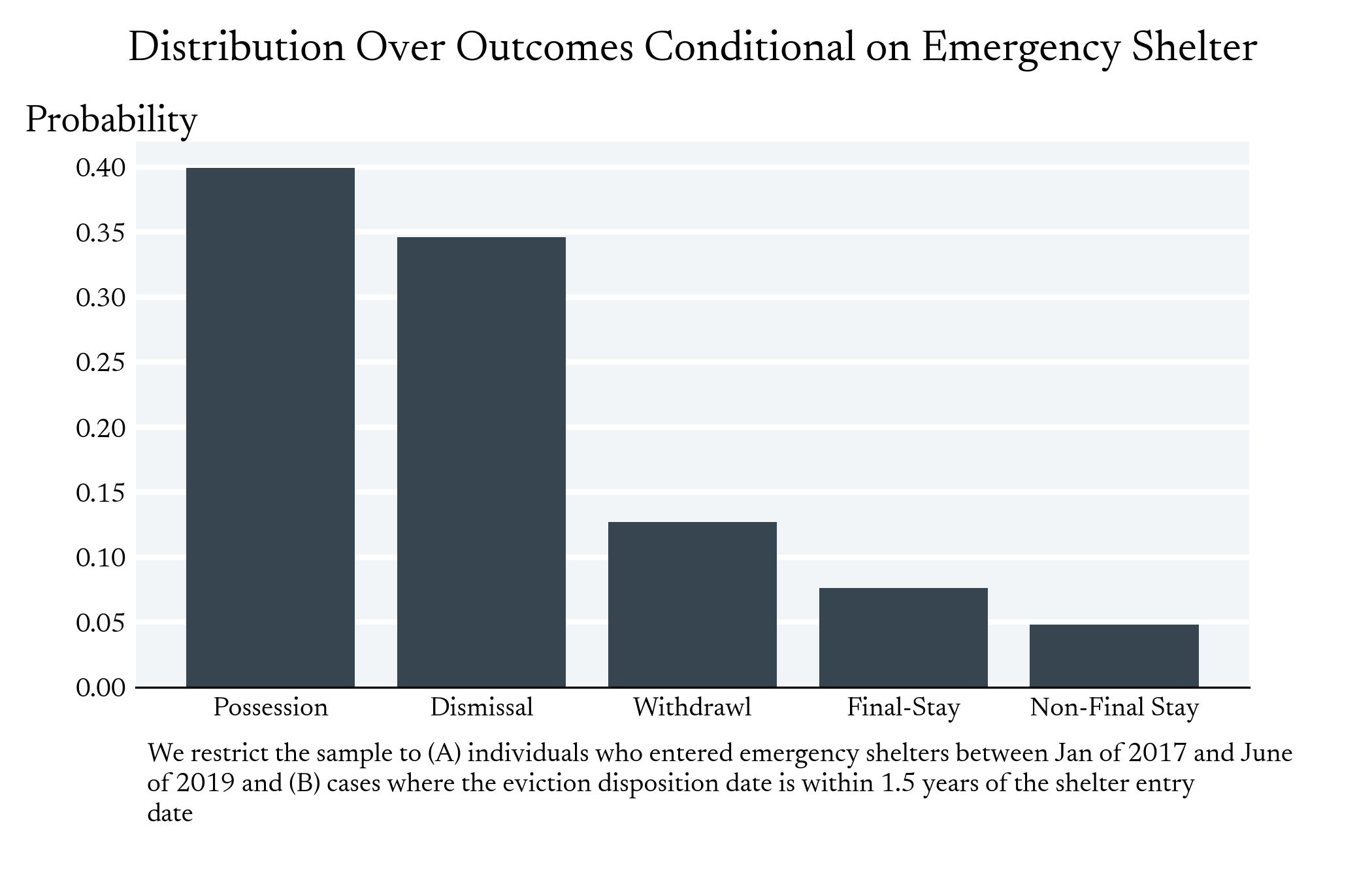
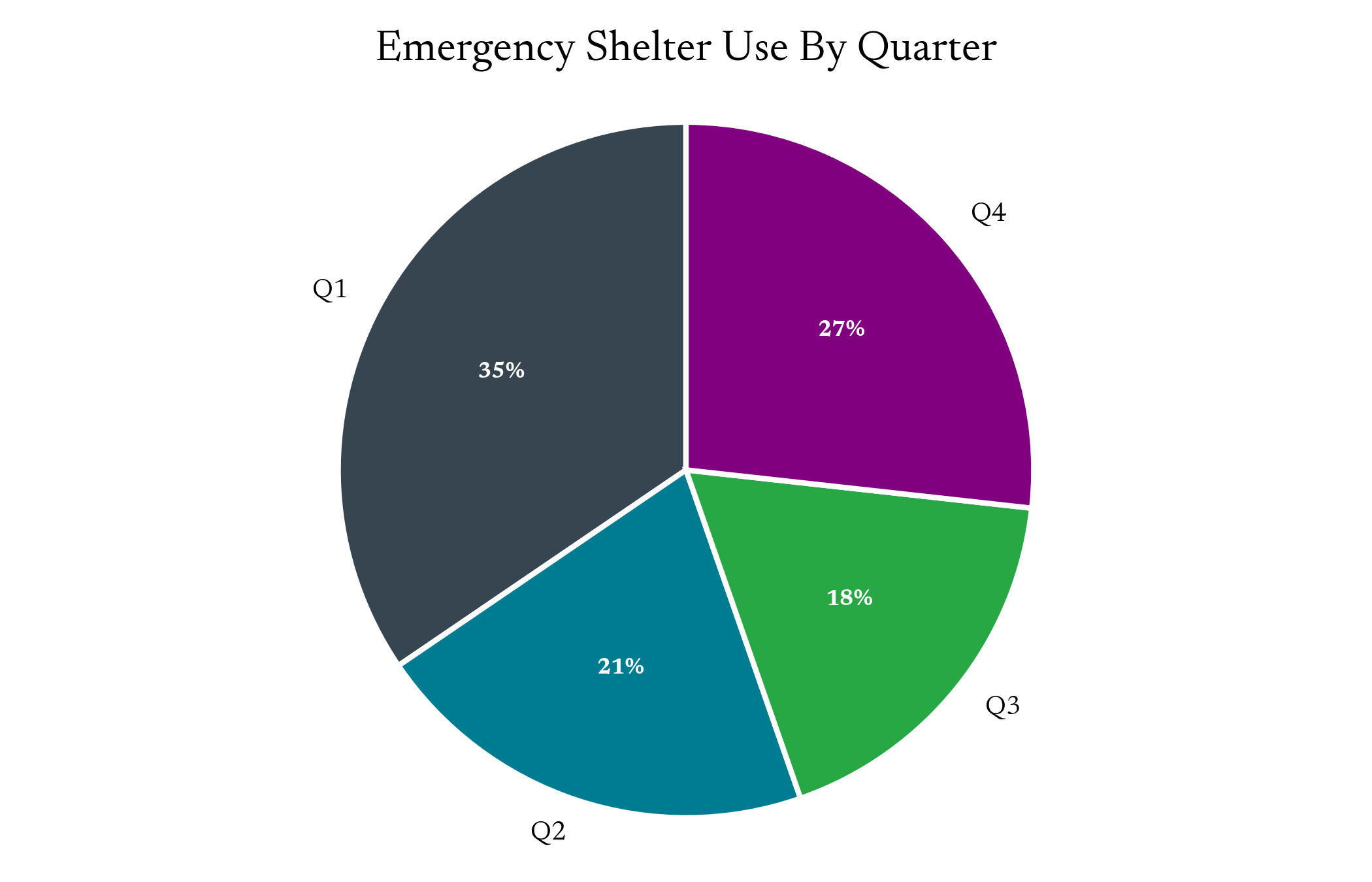
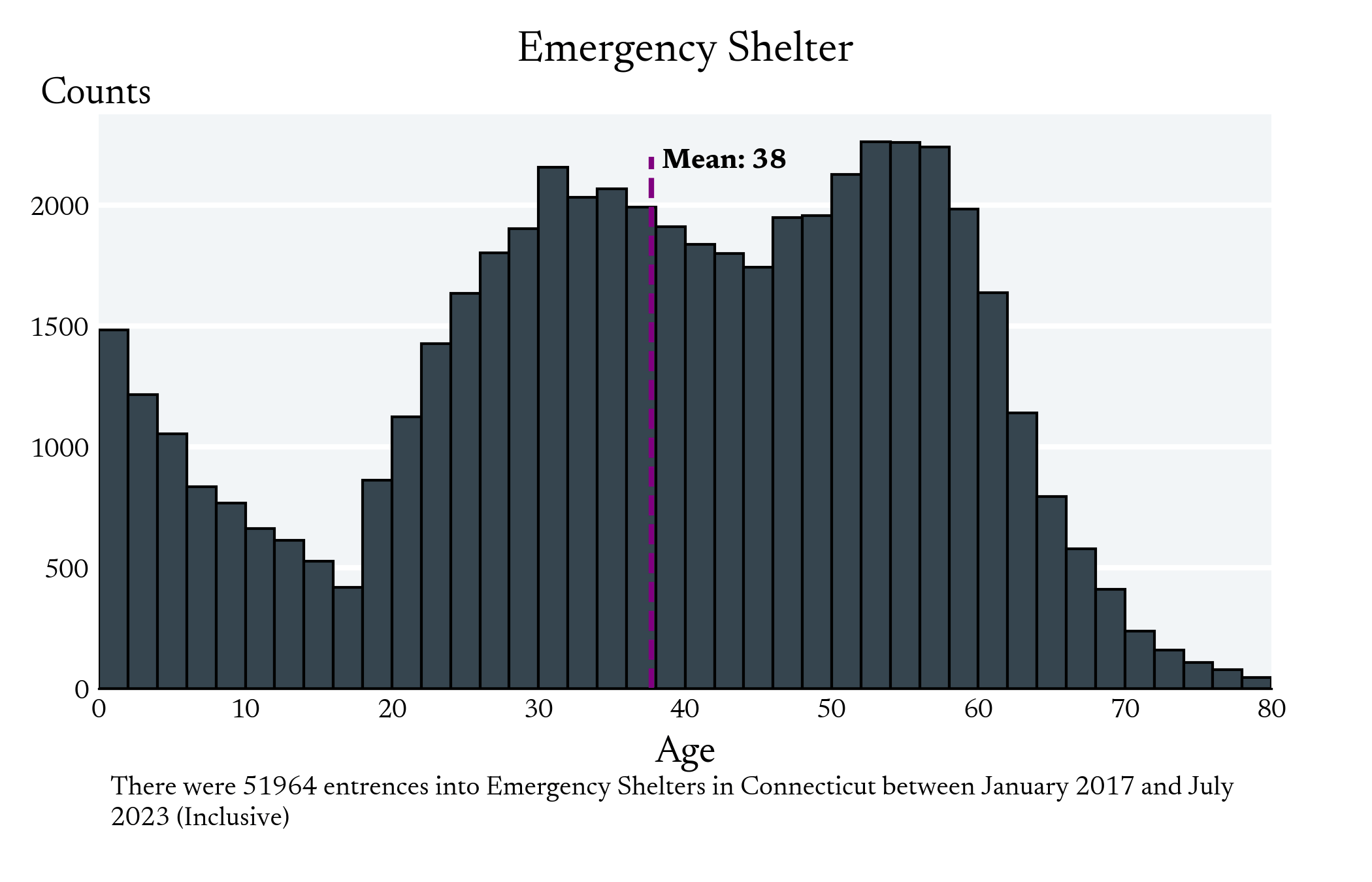
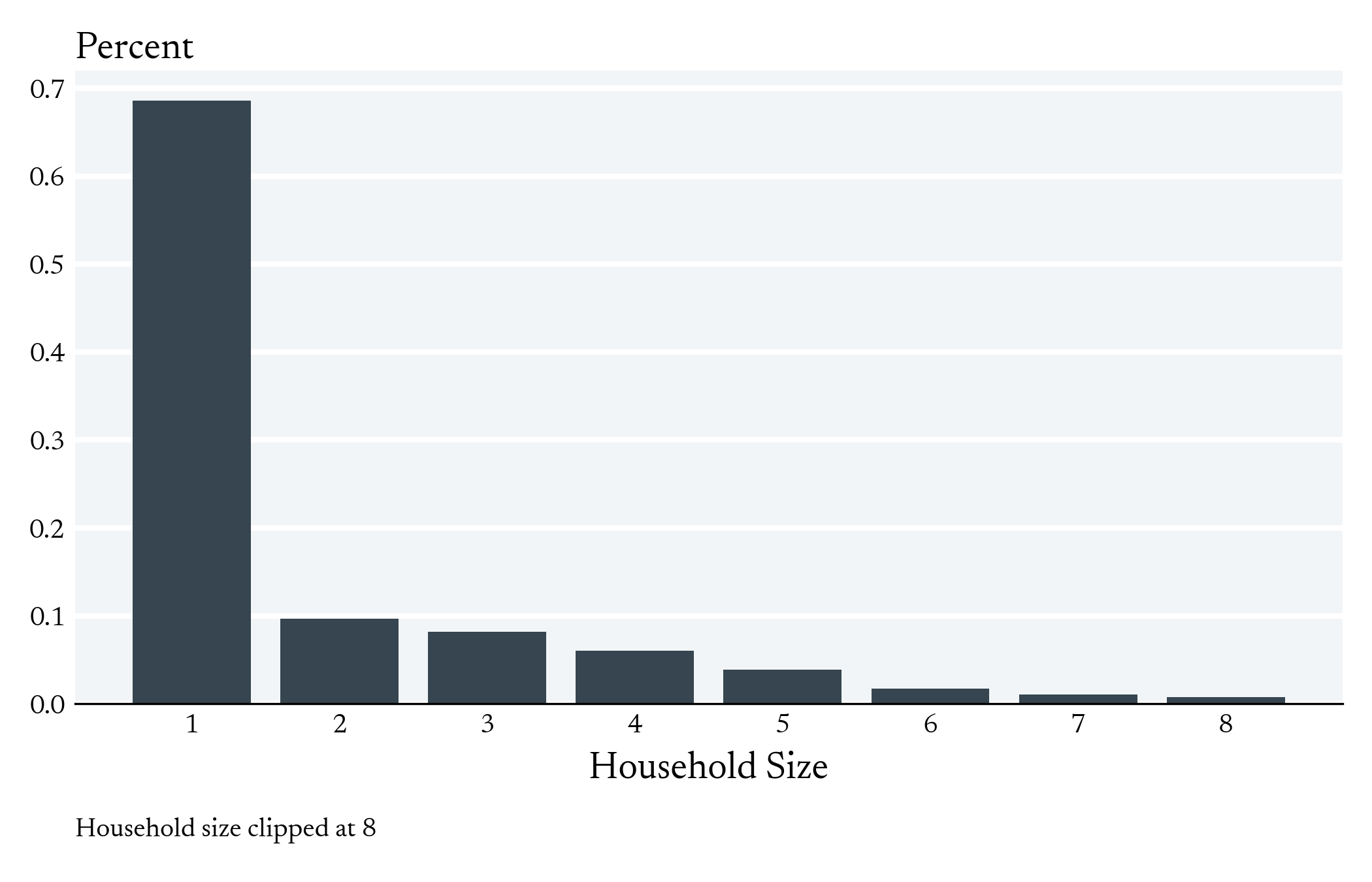
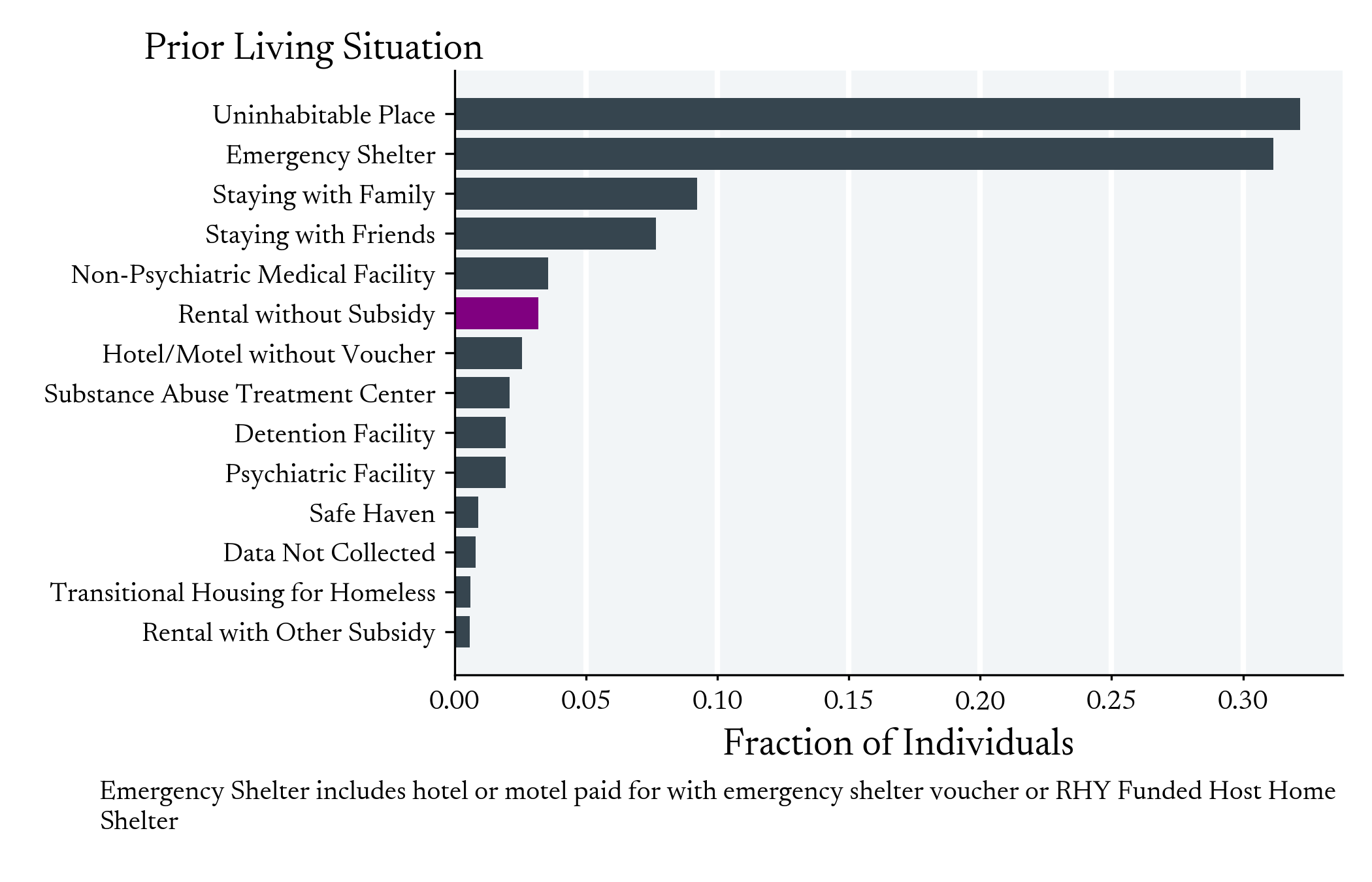
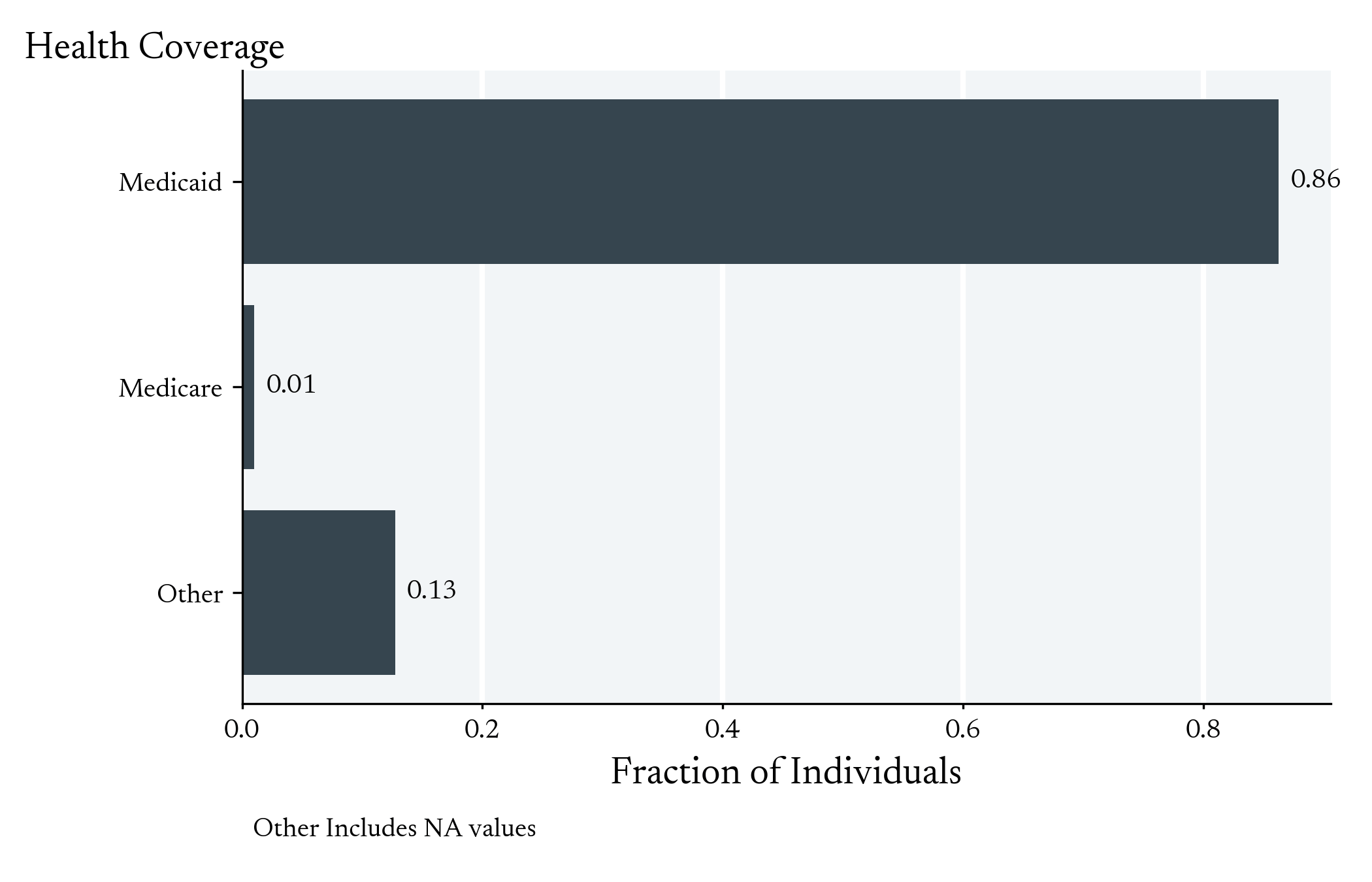
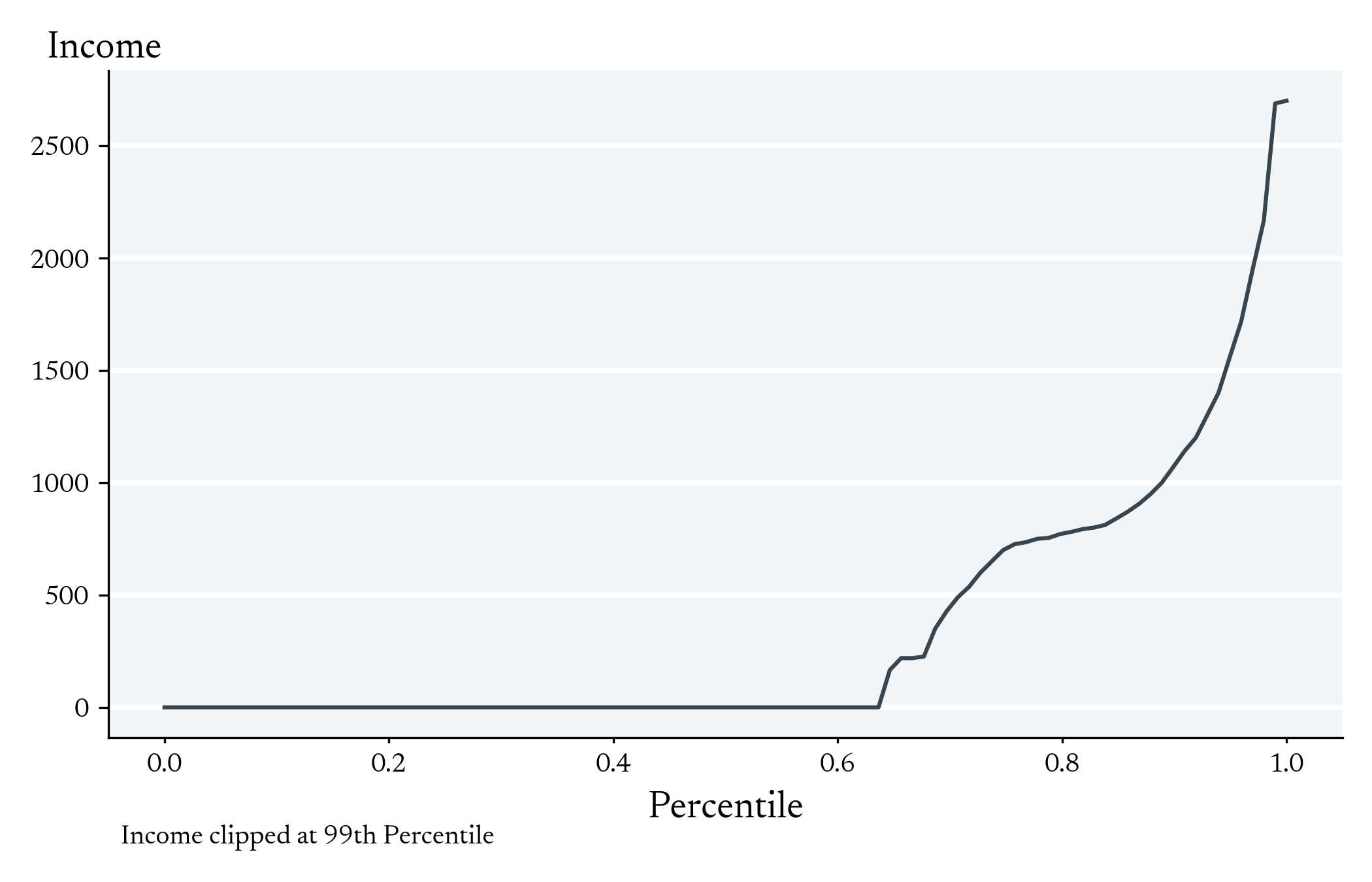
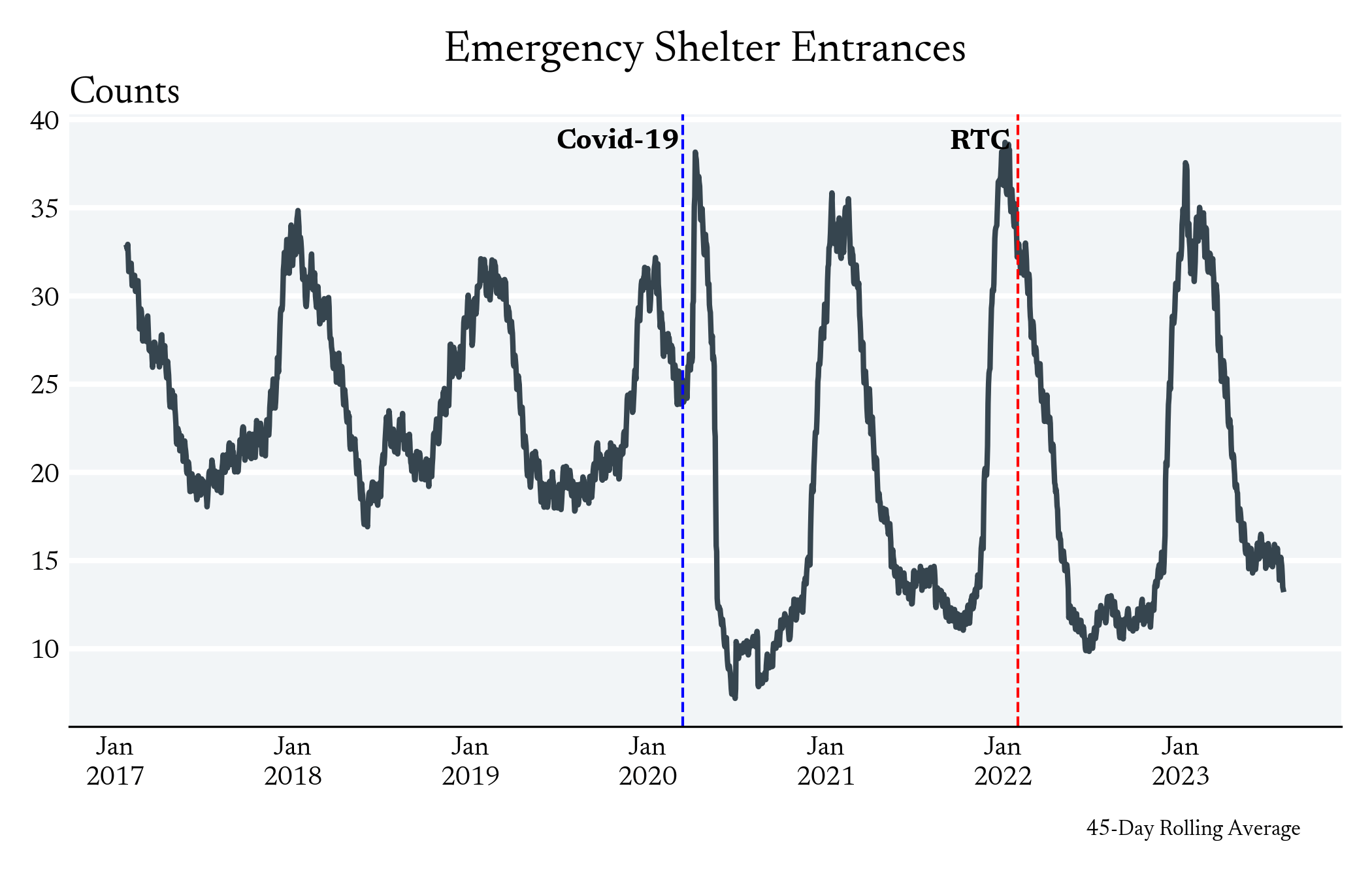
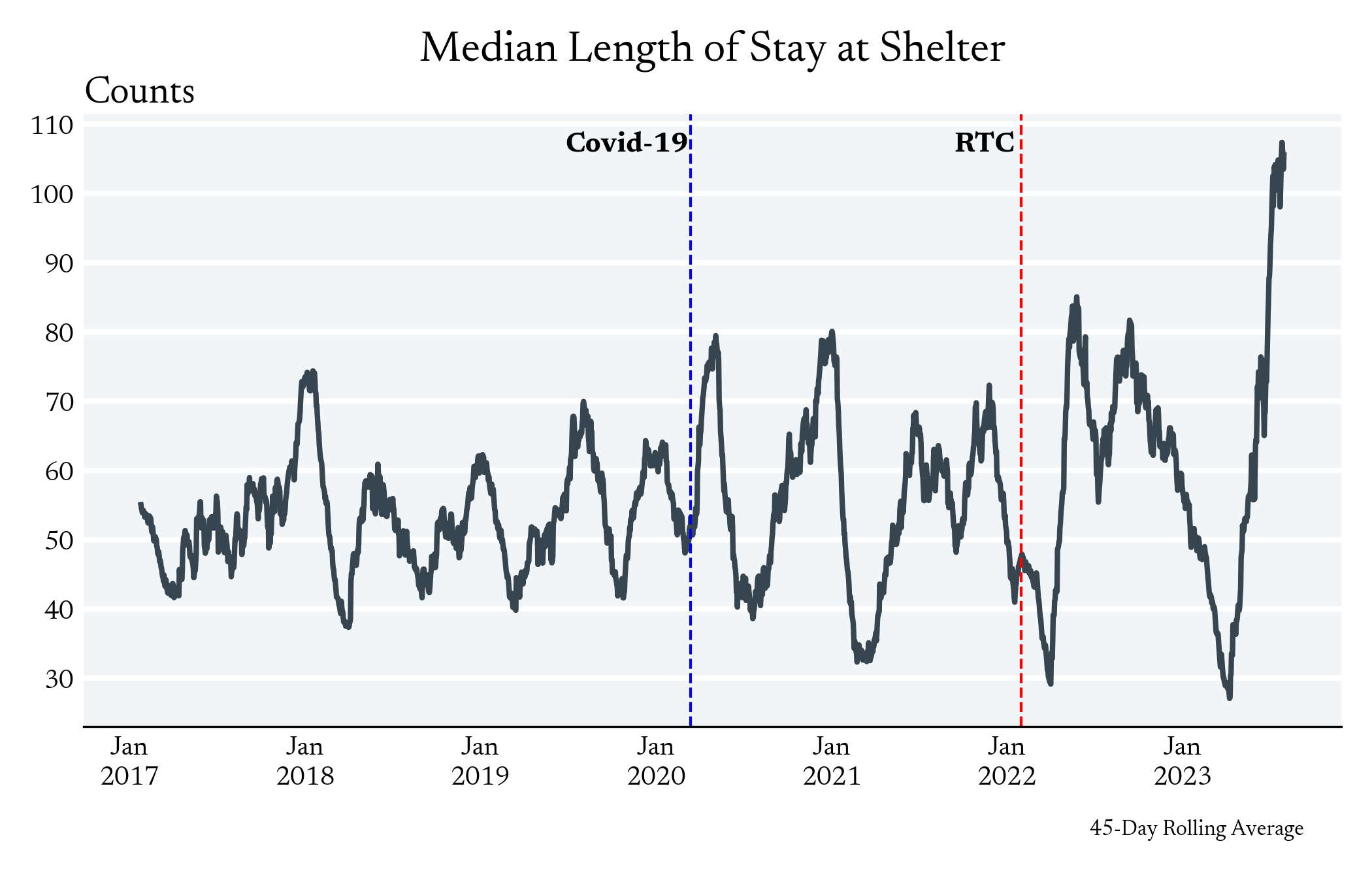
Add slide that compares how other papers make this match
Address Changes
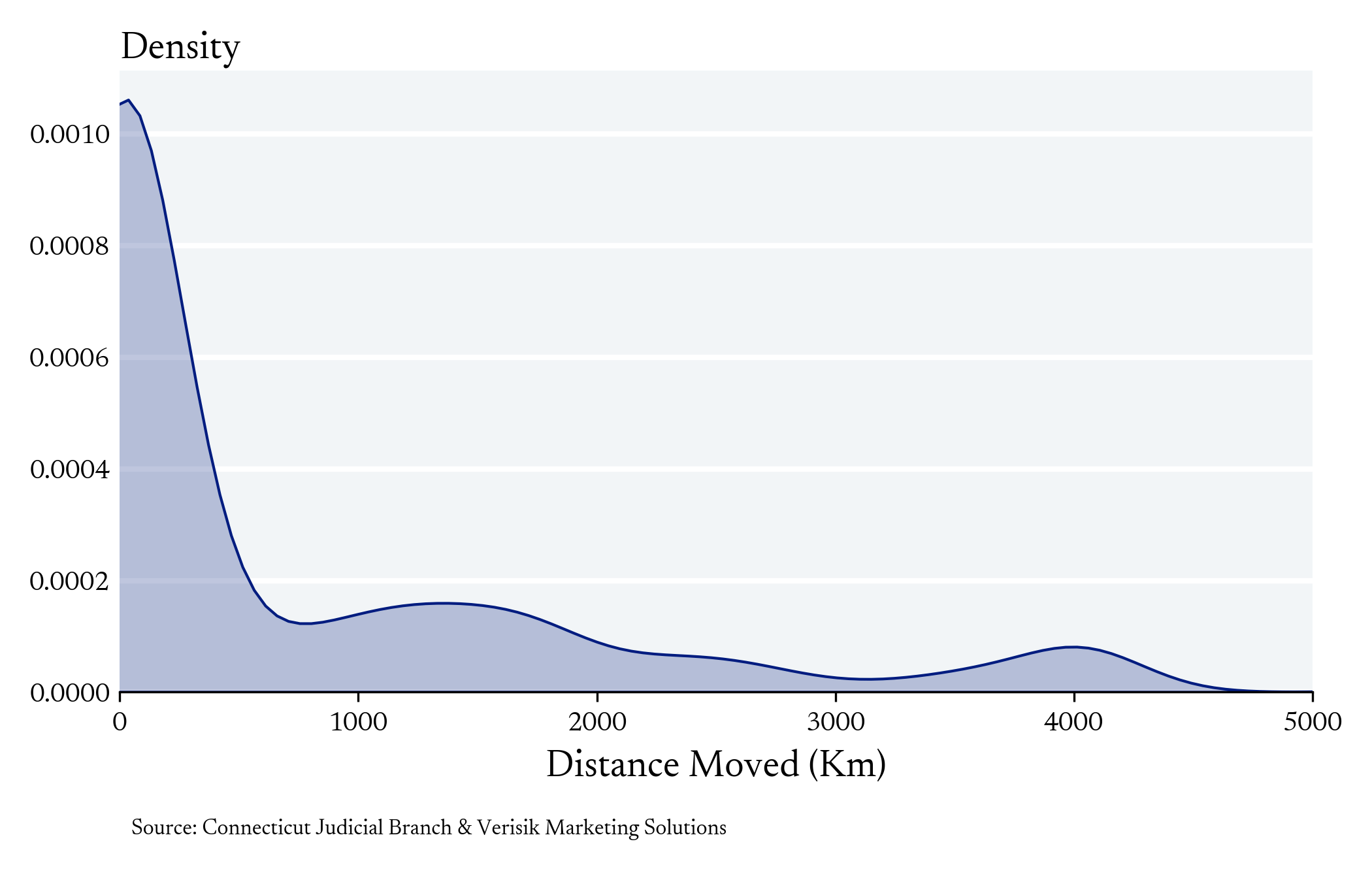
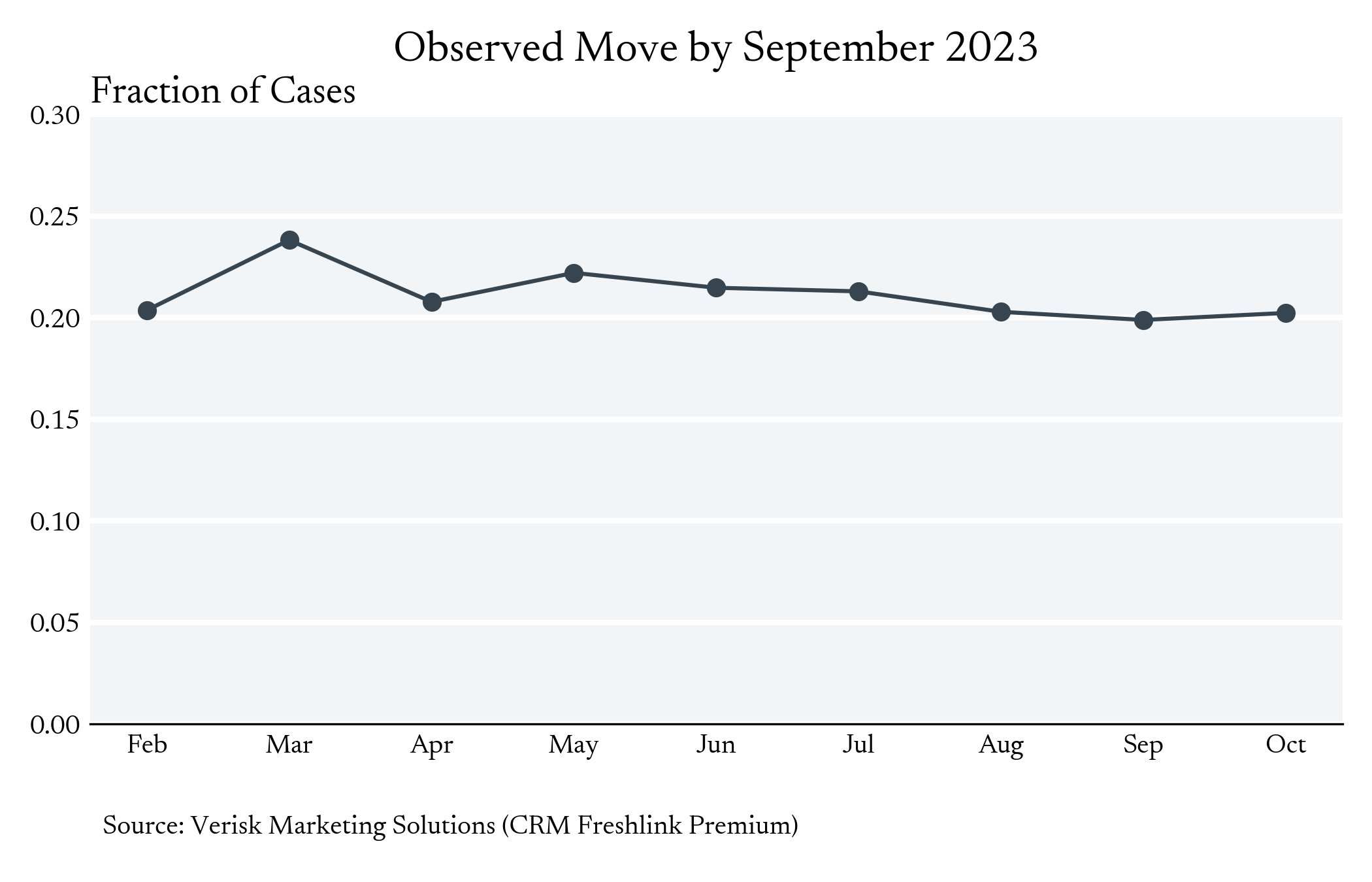
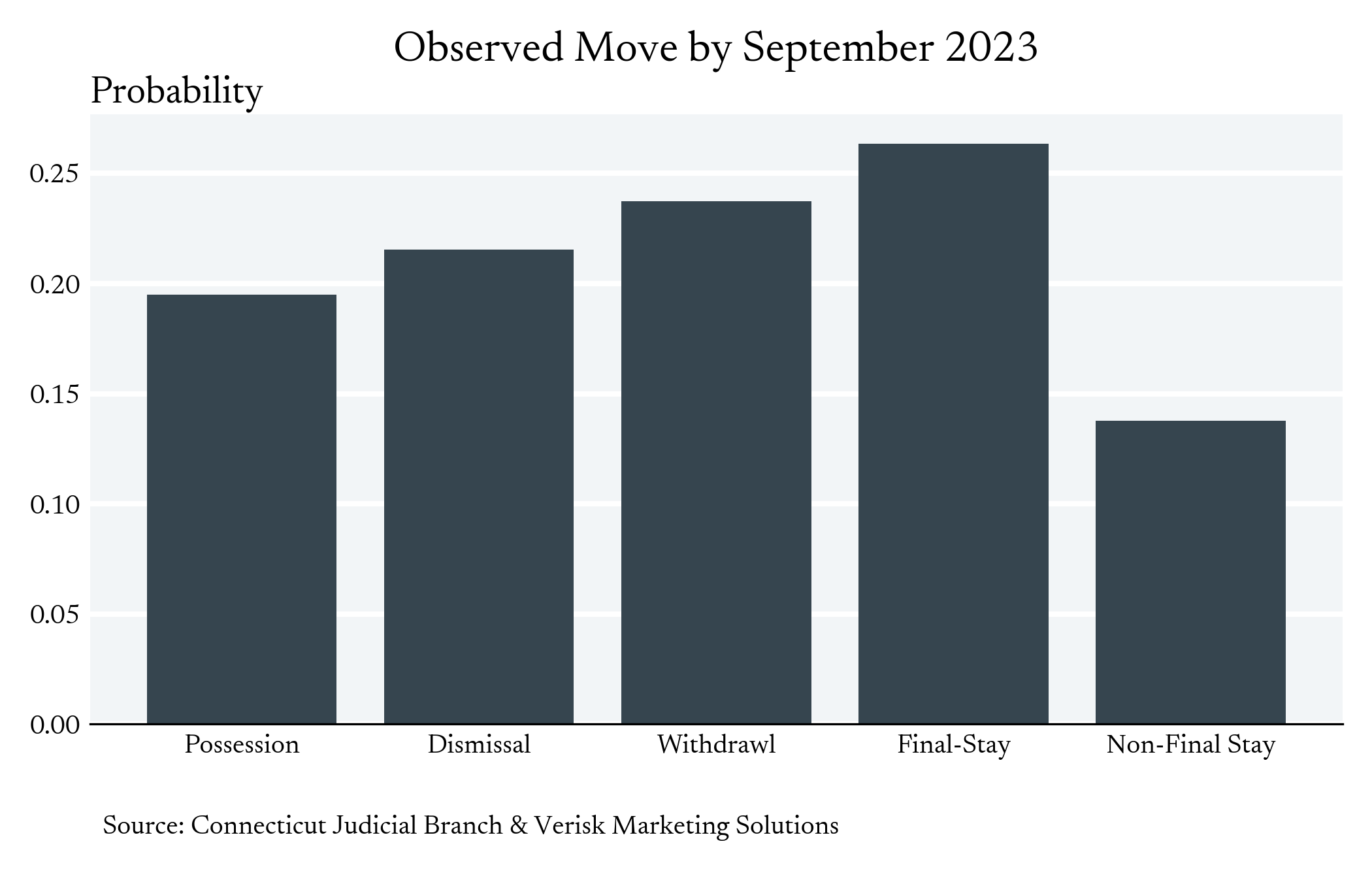
Emergency Shelters

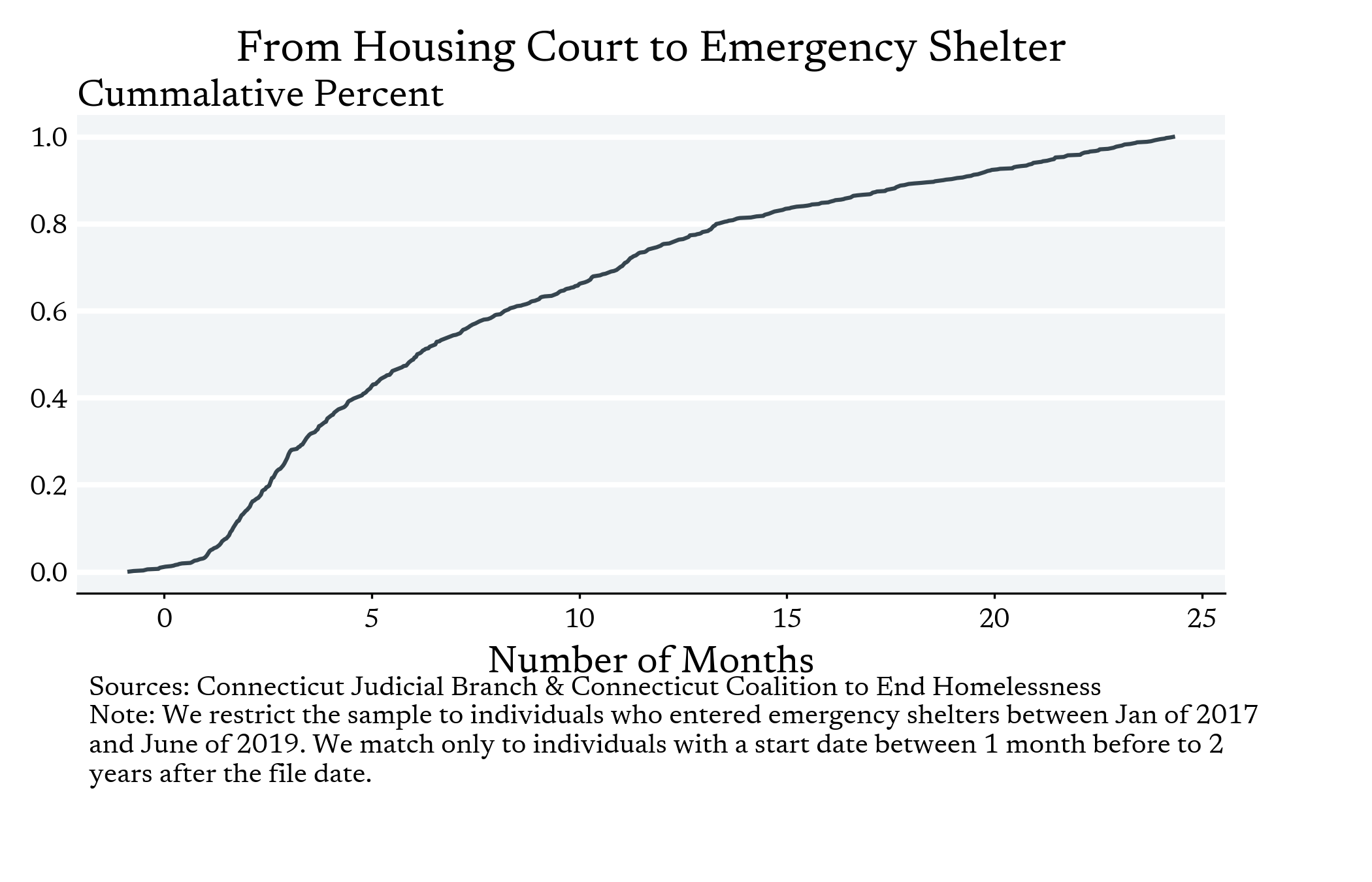
Results
